Native American Artifacts from Snake Meadow Hill
It appears that Snake Meadow is a sacred place. The hill has many strange outcrops and peaks. It also has ponds and streams that are unlike any other hill in this area. Among the little known features of this hill is a crater with a diameter of several hundred feet, on the western side of the hill bordering Cowdry Hill Road and near the site to the west of the road.
In my quest for prehistoric artifacts, I decided to start at the top of Snake Meadow Hill and work my way down to Snake Meadow Brook and Snake Meadow. My journey started on the northwestern side of the hill. I took a path to the north of the hill and when I was due north of the eastern peak, I proceeded to the peak. The cairn below is due north of the valley between the east and west peak of Snake Meadow Hill. A few days prior to this journey, we experienced over six inches of rain.
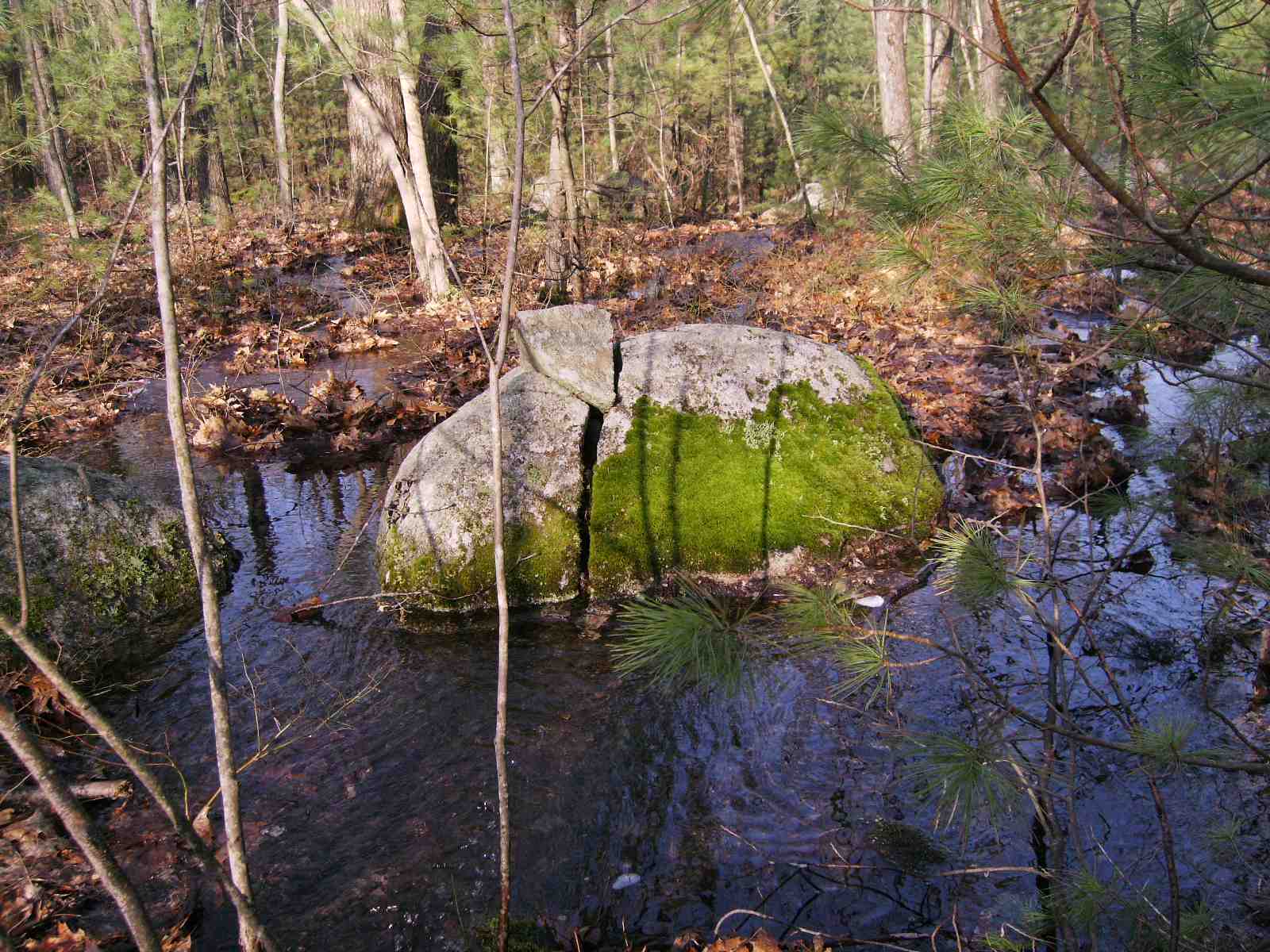
As I approached to top of the hill, I saw what appears to be other cairns. Cairns near quarried are suspect, because they could simply be tailings. There were no quarry marks on these stones.
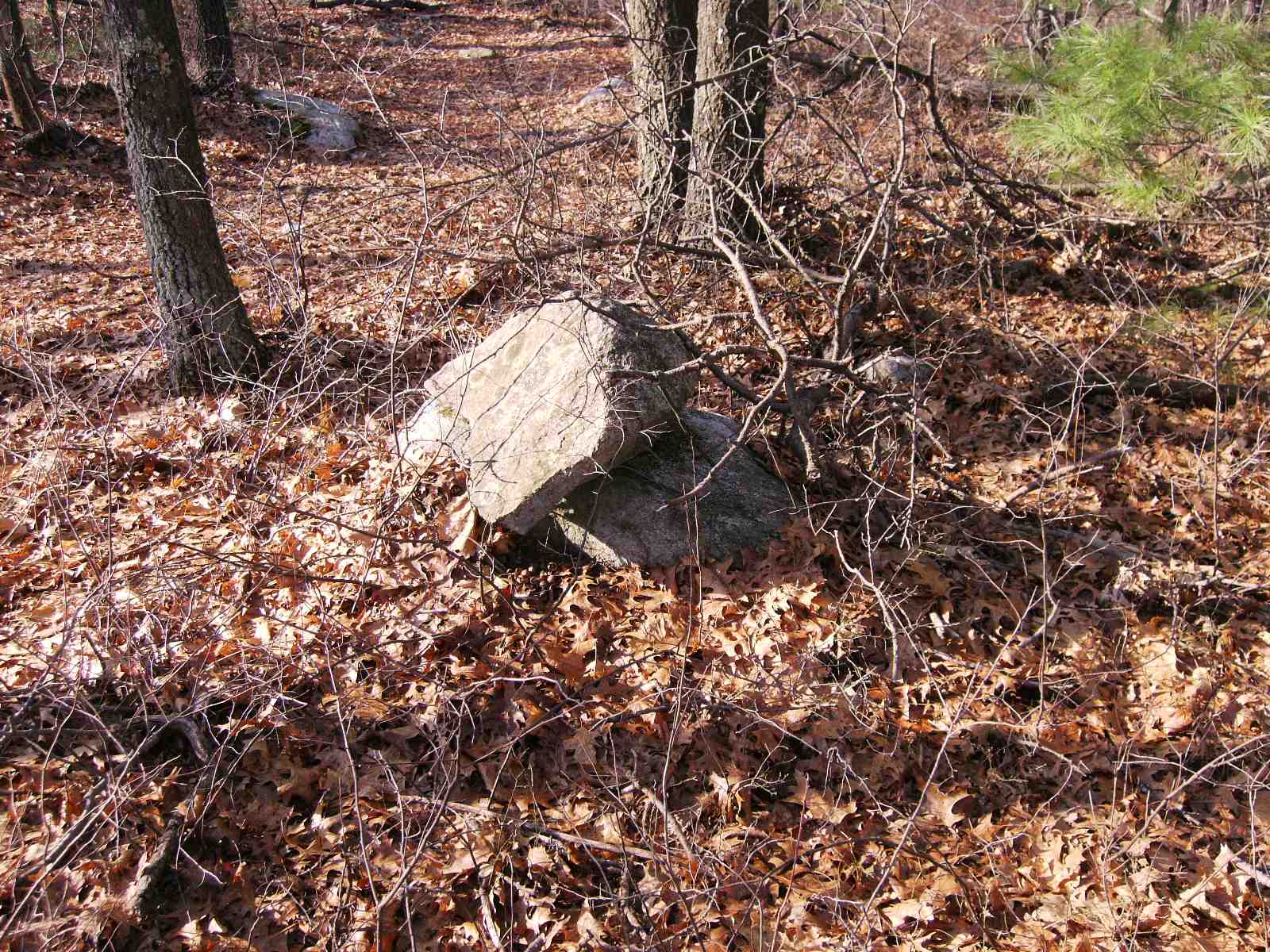
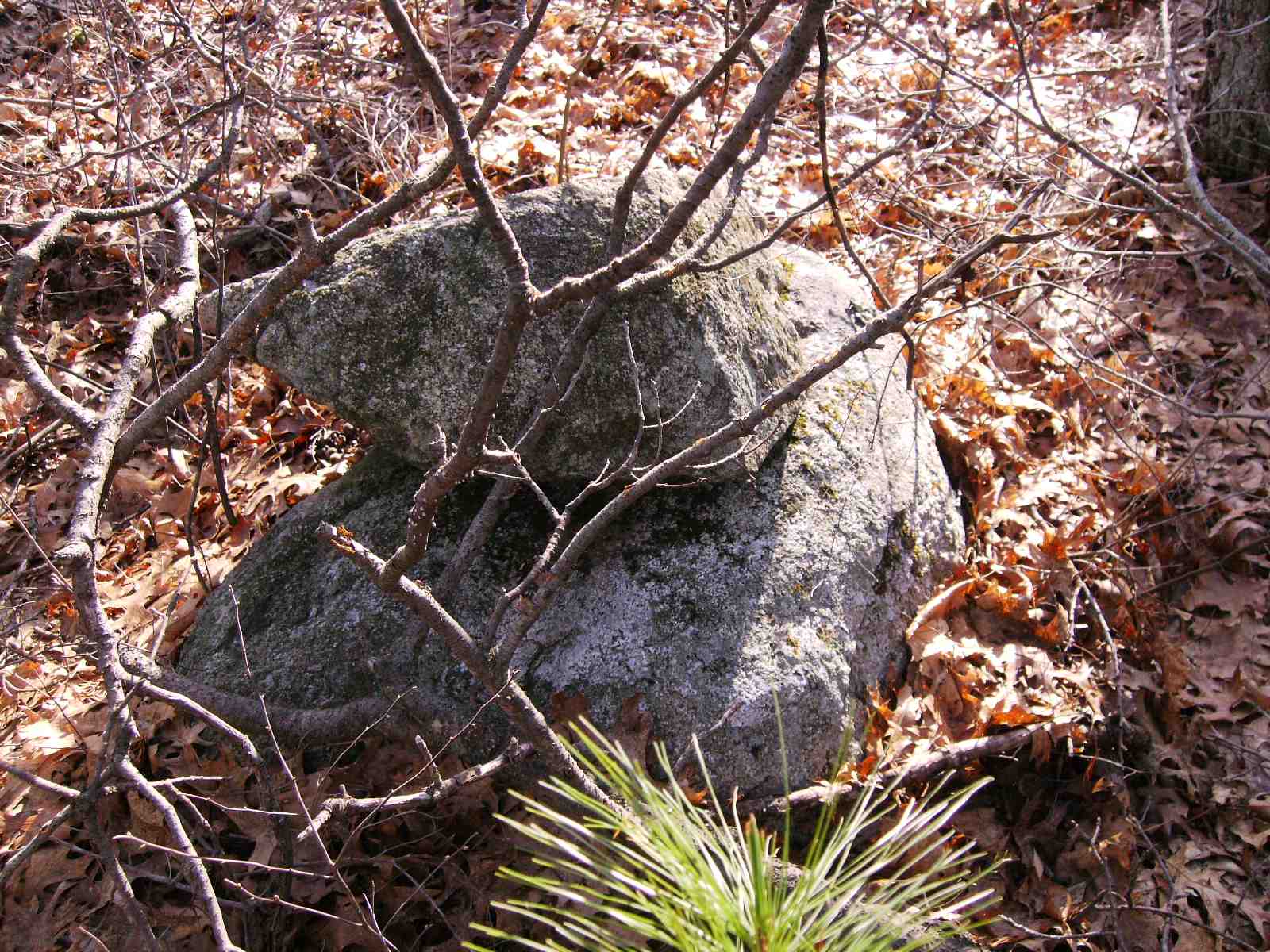
This picture shows two cairns. The first is in the foreground and the second is in the background.
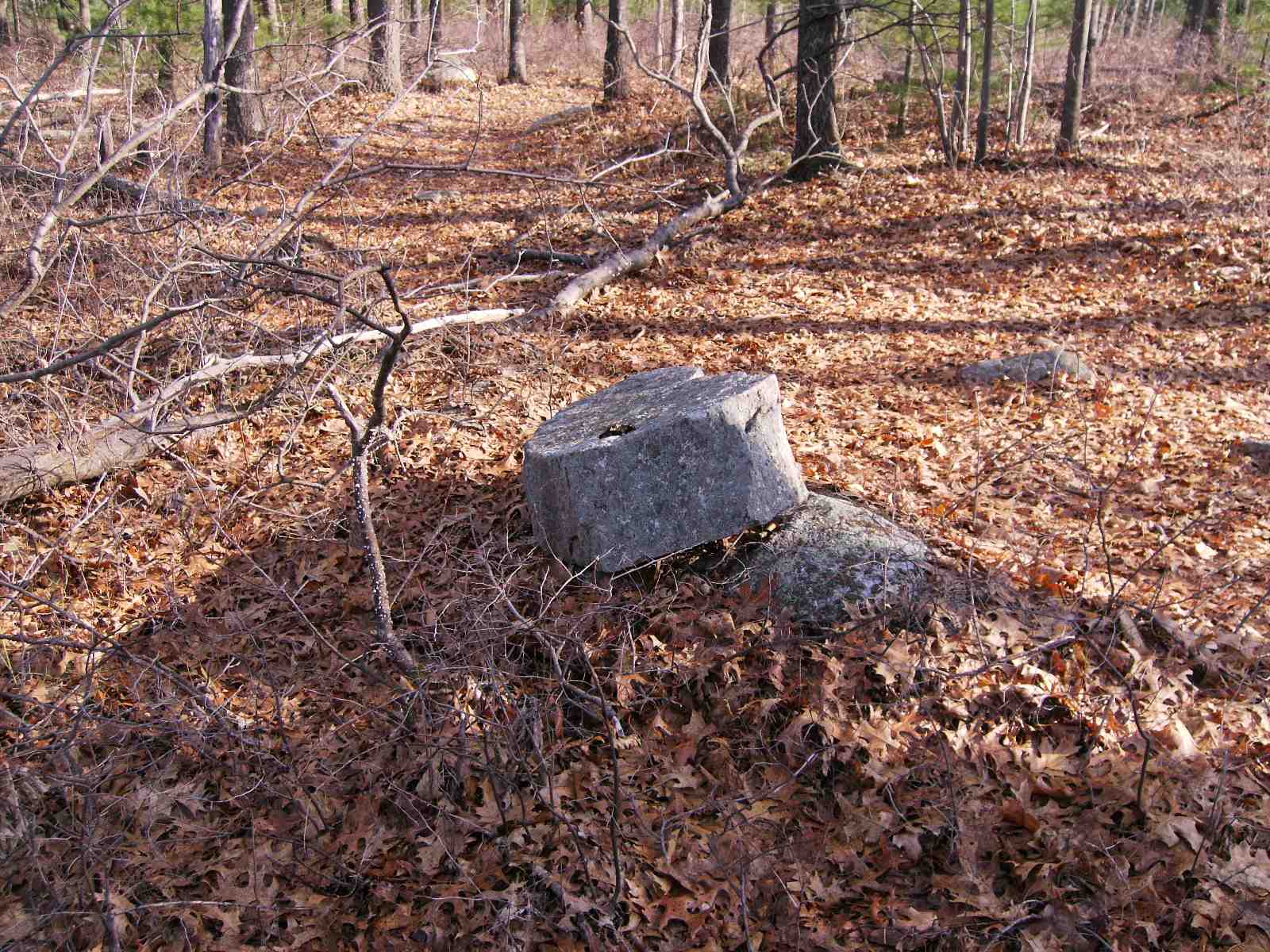
At the eastern peak of Snake Meadow Hill is an abandoned quarry. I am sure that many artifacts were destroyed. It appears that one was saved. This is a fairly comfortable chair, which I have sat upon many times. The boulder beside it was cut by the quarry. Notice the vein of quartz on the side.
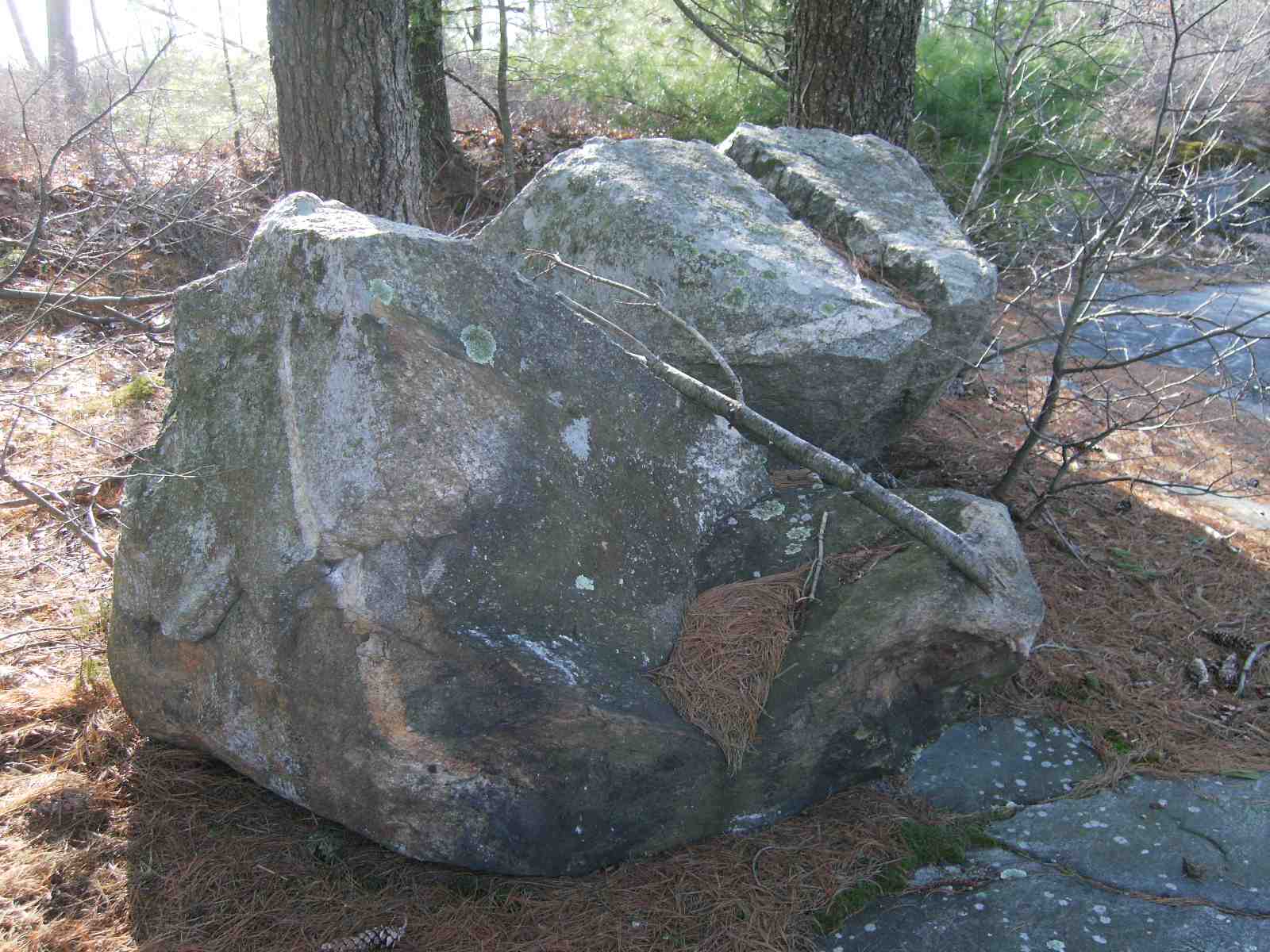
From the quarry, I proceeded west. As I was in the valley between peaks, I had an unusual experience that felt almost supernatural. I was standing behind a large boulder. Suddenly, I heard a sound and saw an animal rush by me at incredible speed. It disappeared behind the boulder. At the closest, it was only about fifty feet away. It was deer-like, but dark brown or black, whereas deer are light brown or tan. Then, the animal pursuing appeared. For a few seconds, we stared at each other, and then it continued to chase its prey. I clearly recognized the second animal as a wolf. Wolves have not been seen in this area for hundreds of years.
The following series of pictures were taken near the western summit. Near the center of the picture is a flat rock leaning upon another rock. On the top right of this picture is another cairn.
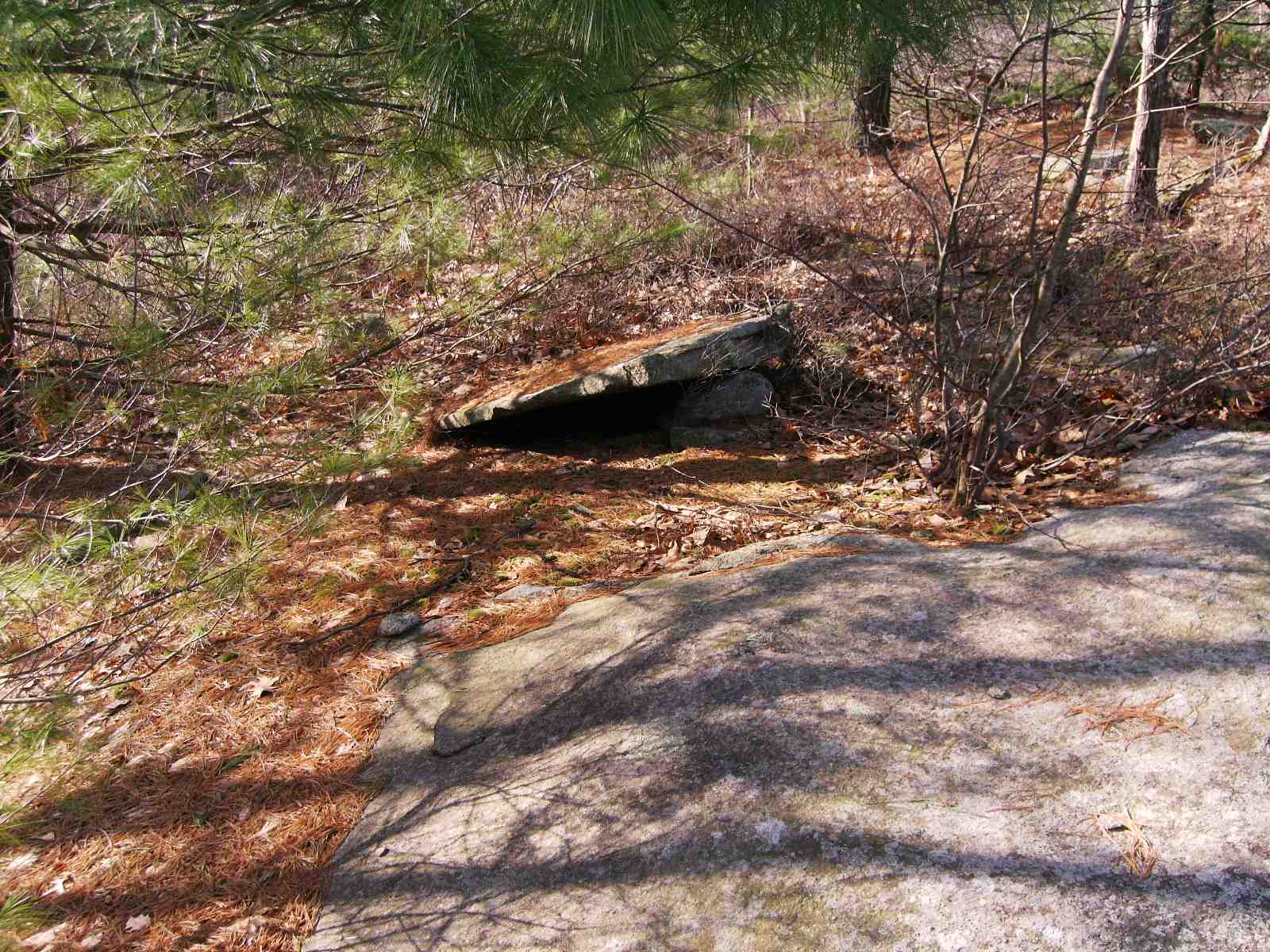
A few feet away is a cairn with a triangular stone.
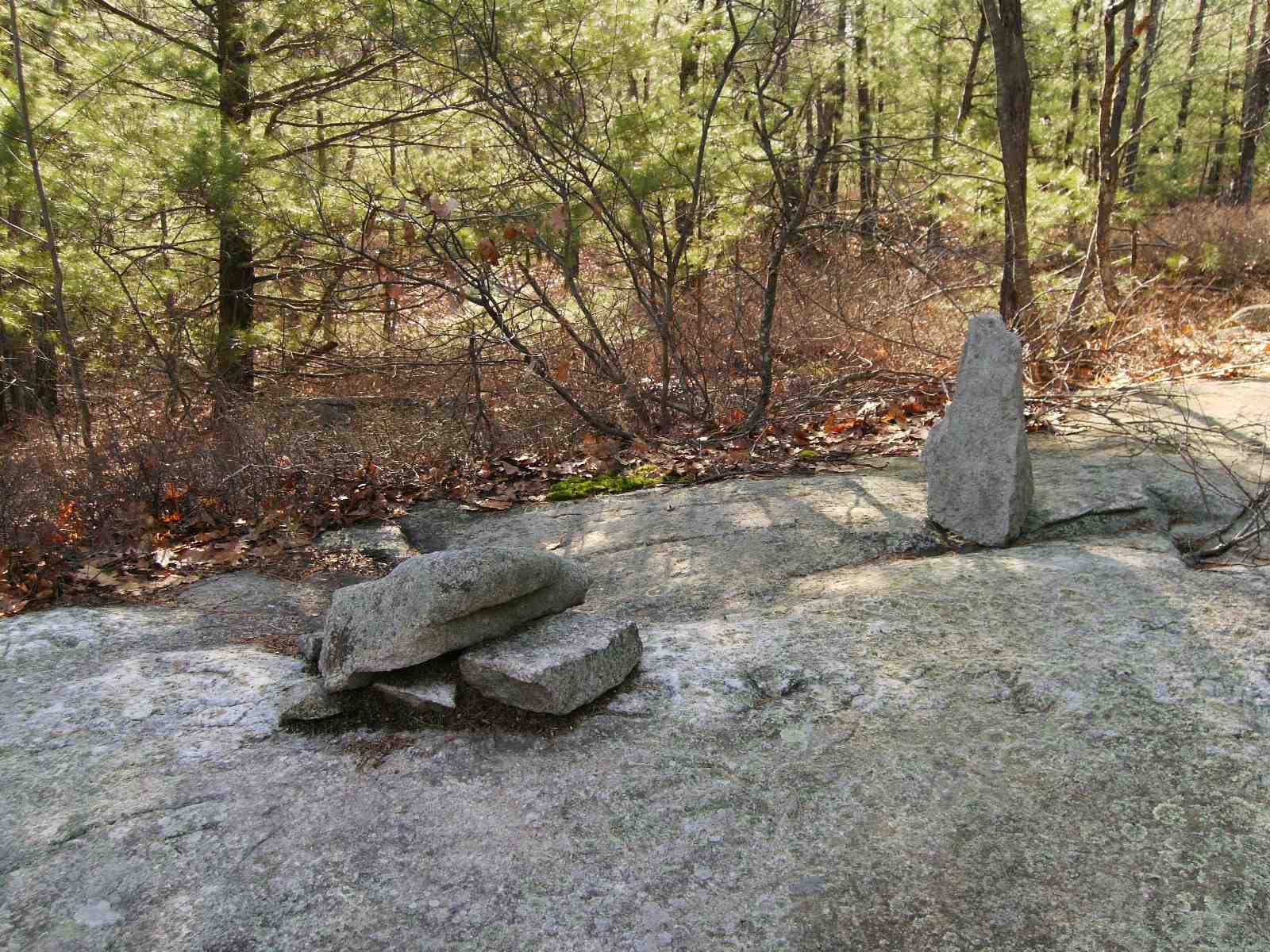
This is a small pedestal stone. It is small compared to many others found in this area.
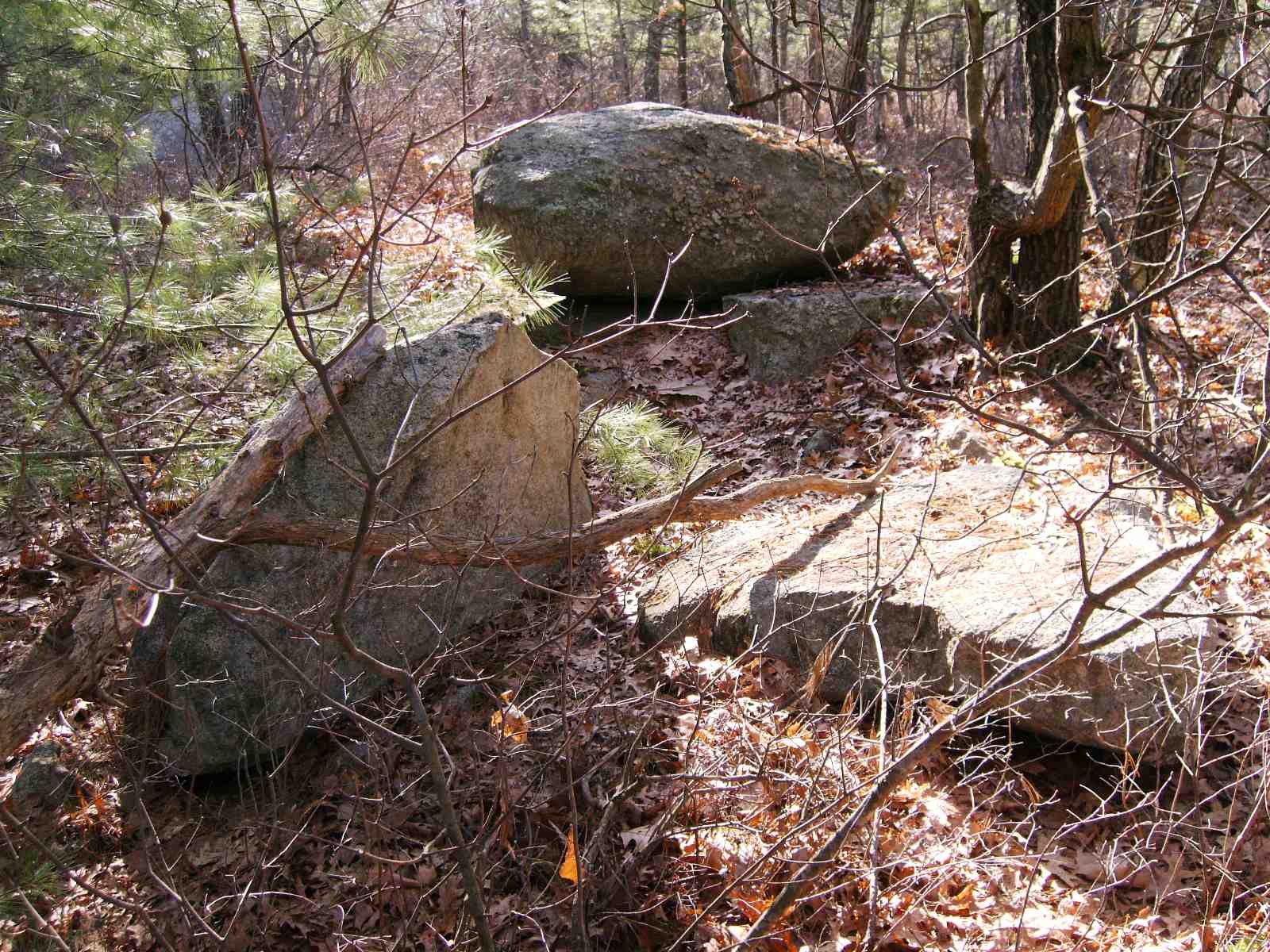
Here is another stone on a base.
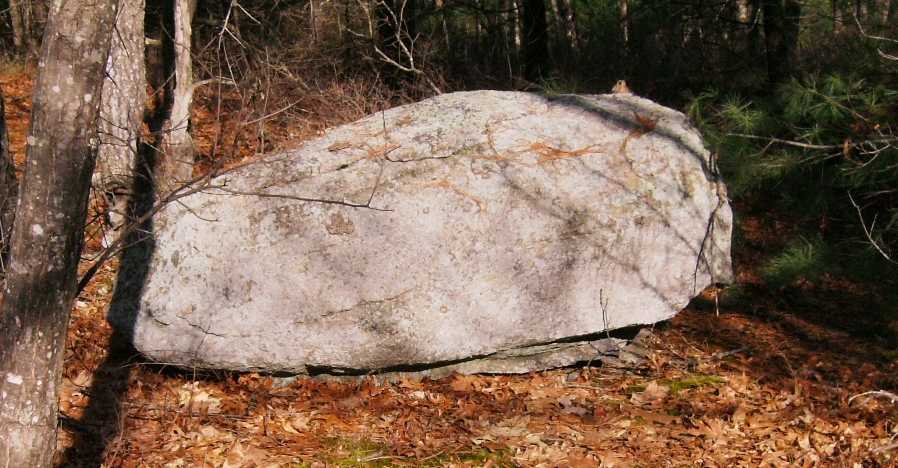
This is the largest and strangest pedestal stone on the hill top.
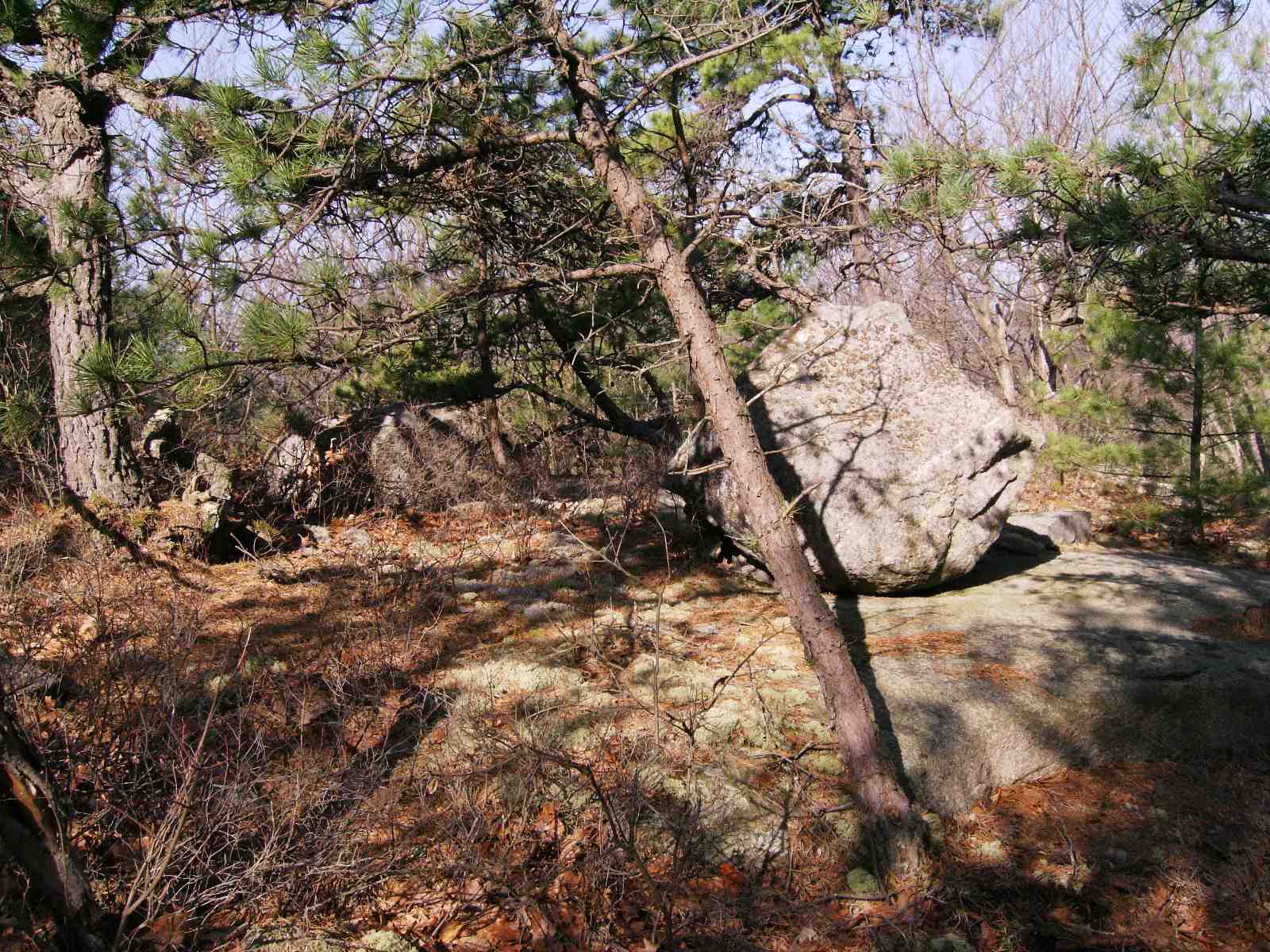
It is balanced on a ledge.
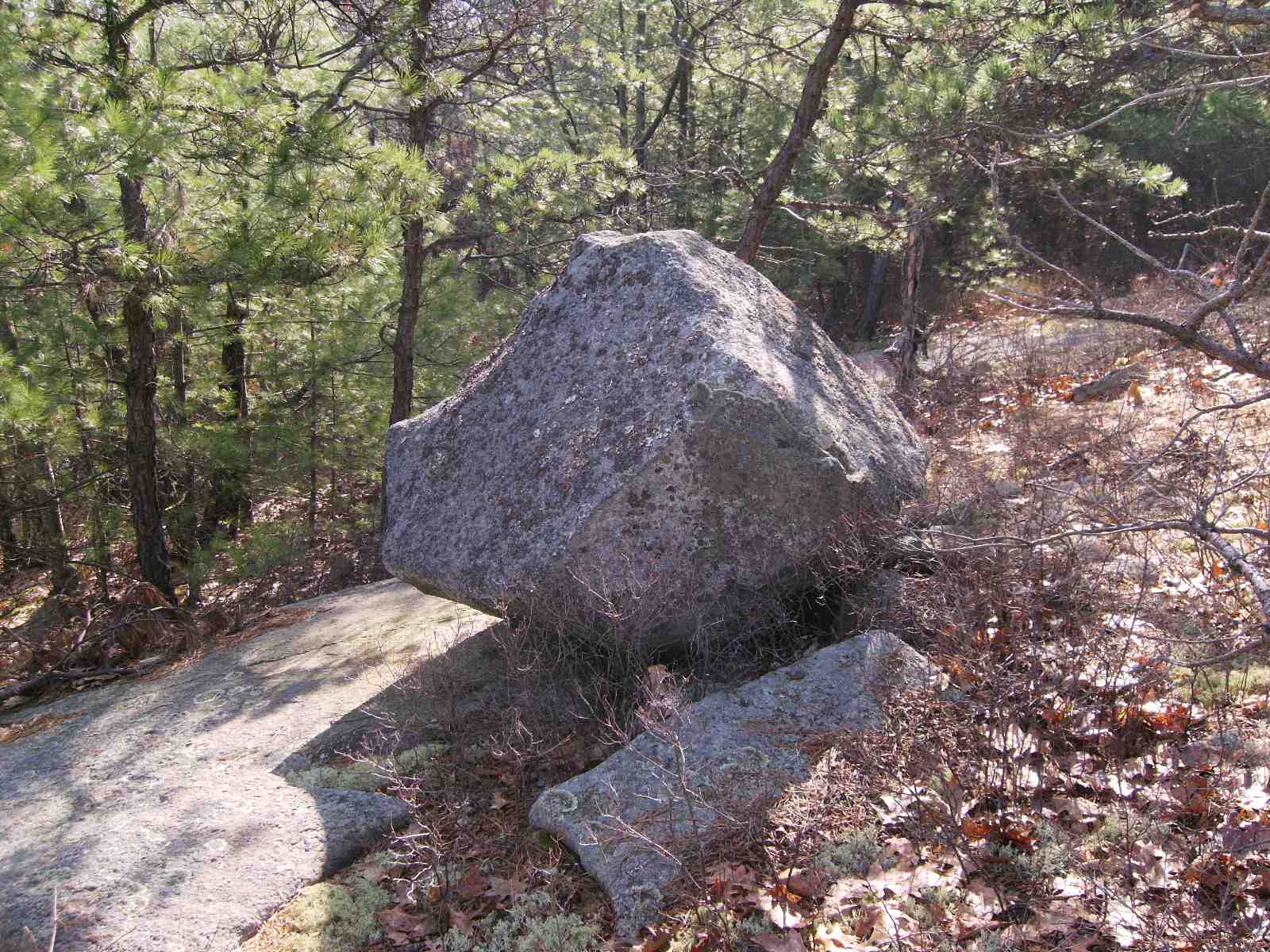
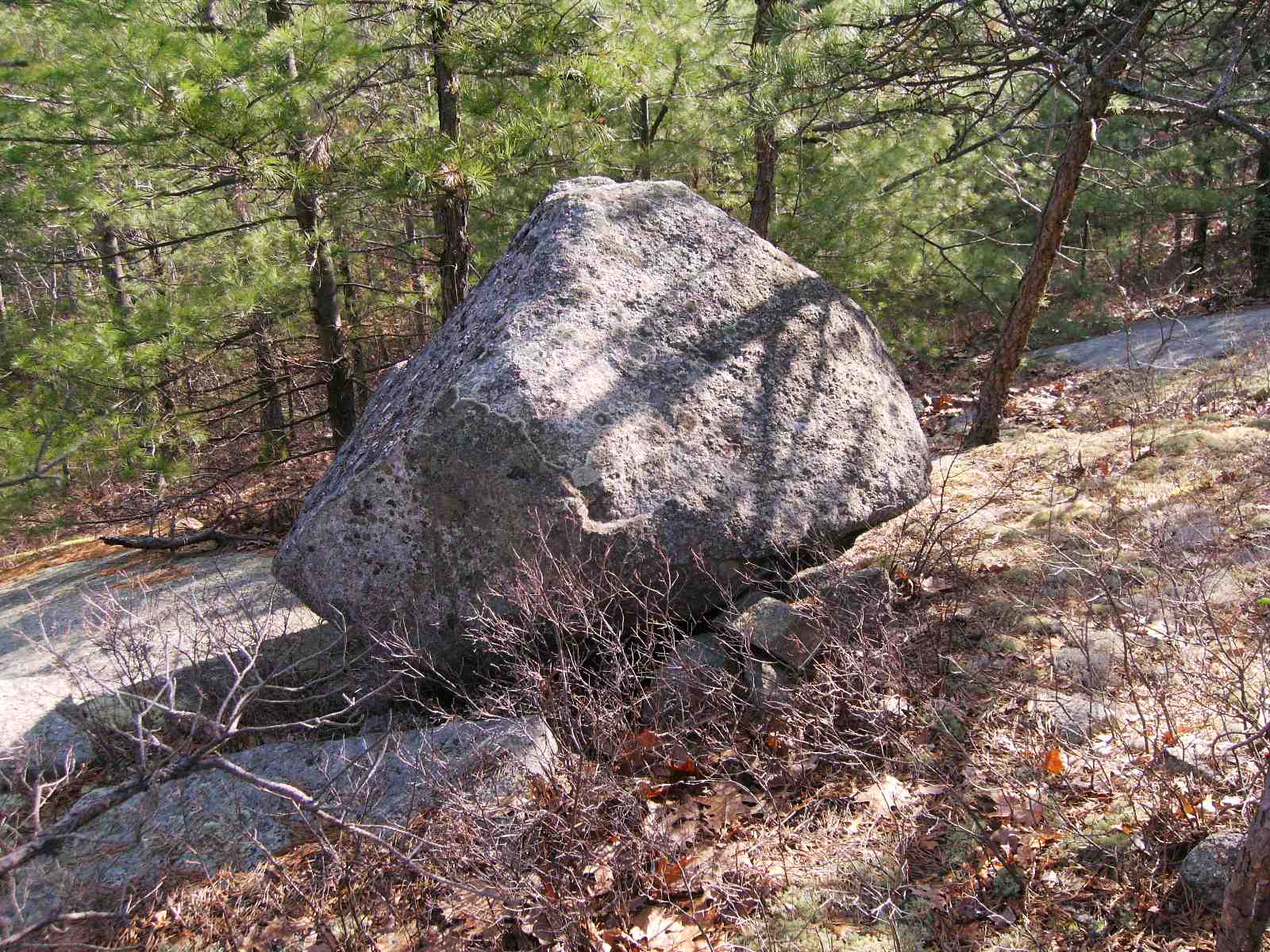
Although most of the weight of the stone is on the ledge, one side has been propped up by small stones.
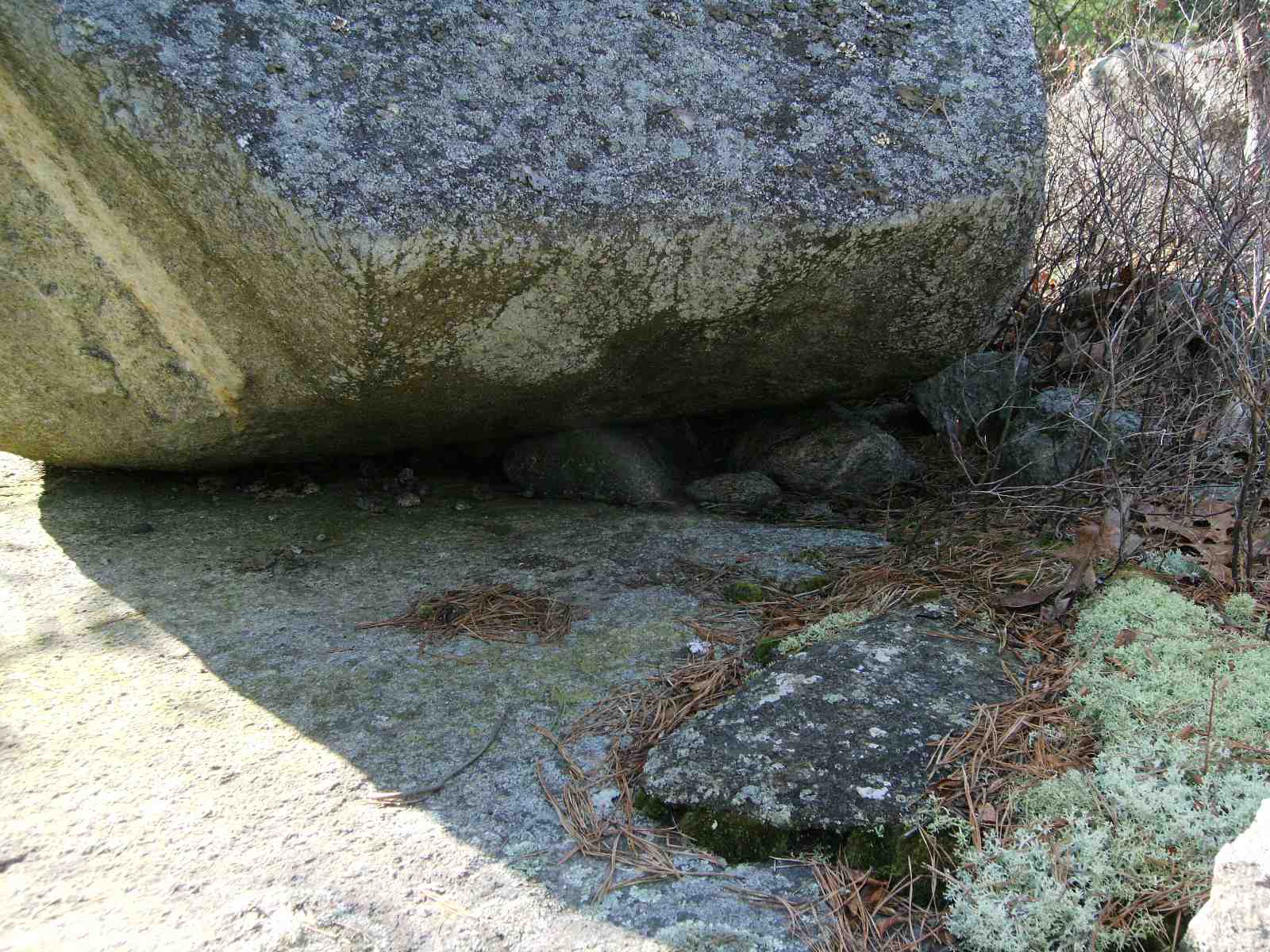
There is a vein of quartz that is so rectangular that it looks as if it was painted on. The white streak in the shadow is a camera artifact (I think!).
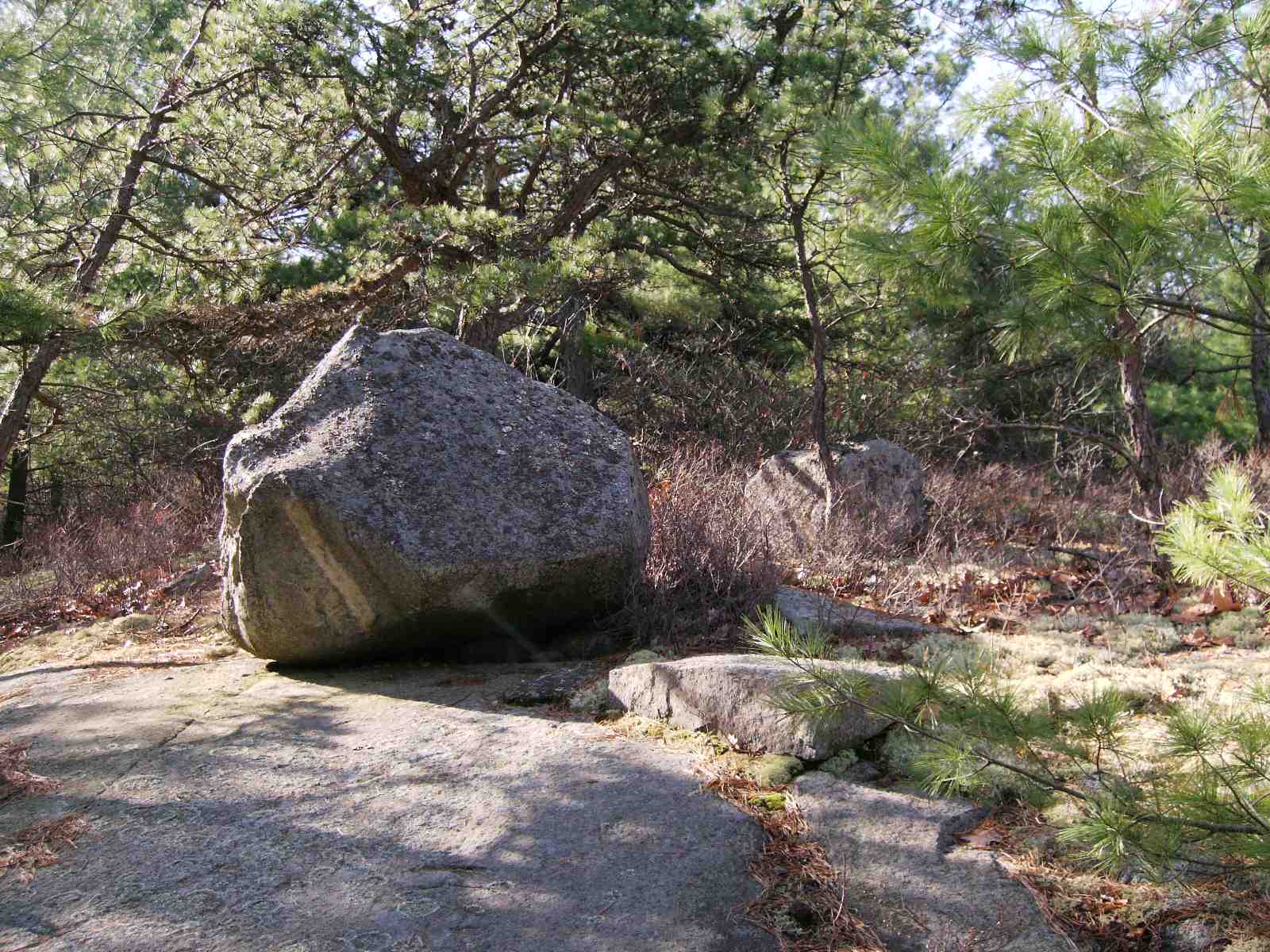
When you step back, it can be seen that this stone is on the edge of a cliff.
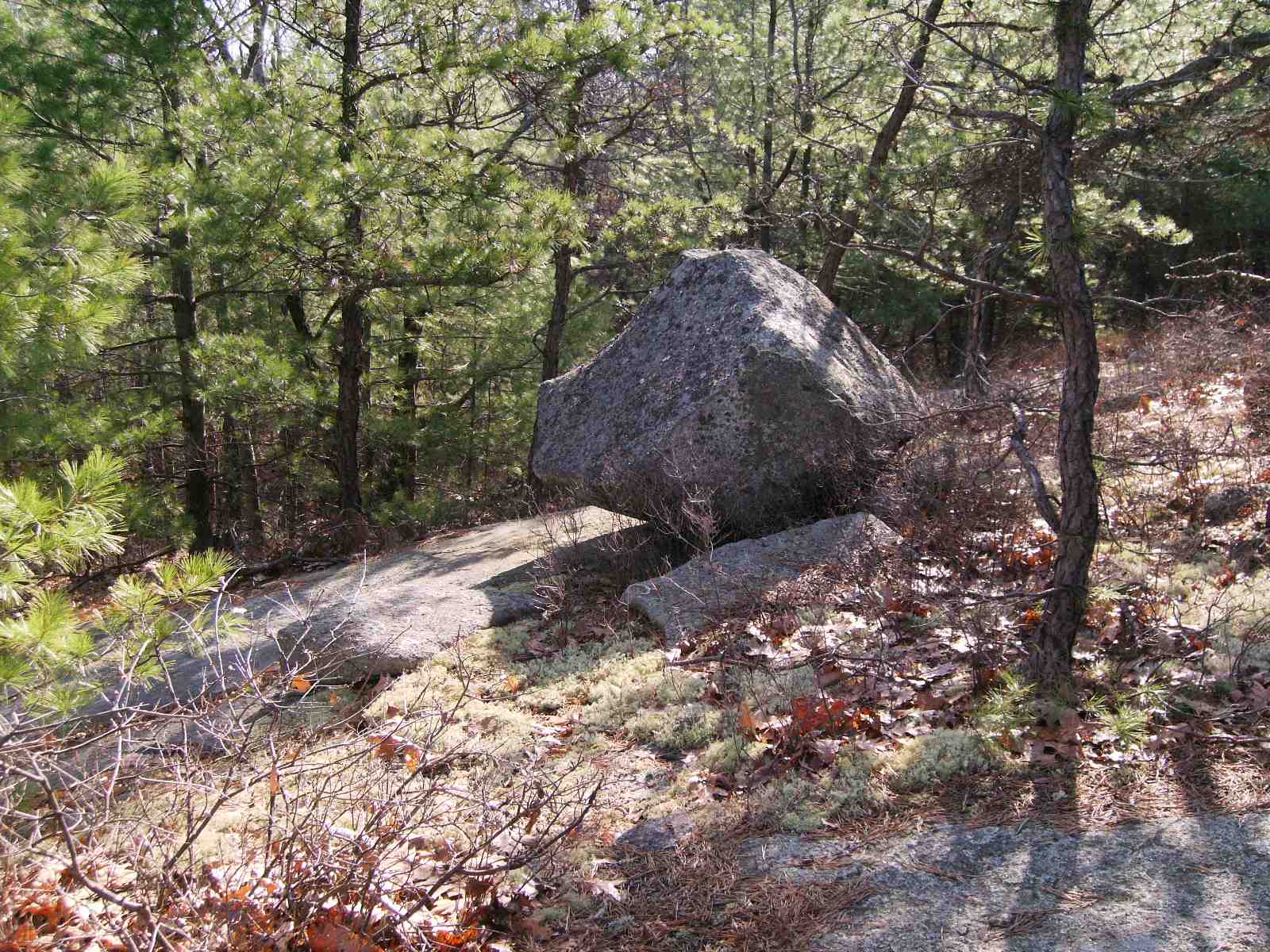
From the bottom of the cliff, this boulder is foreboding!
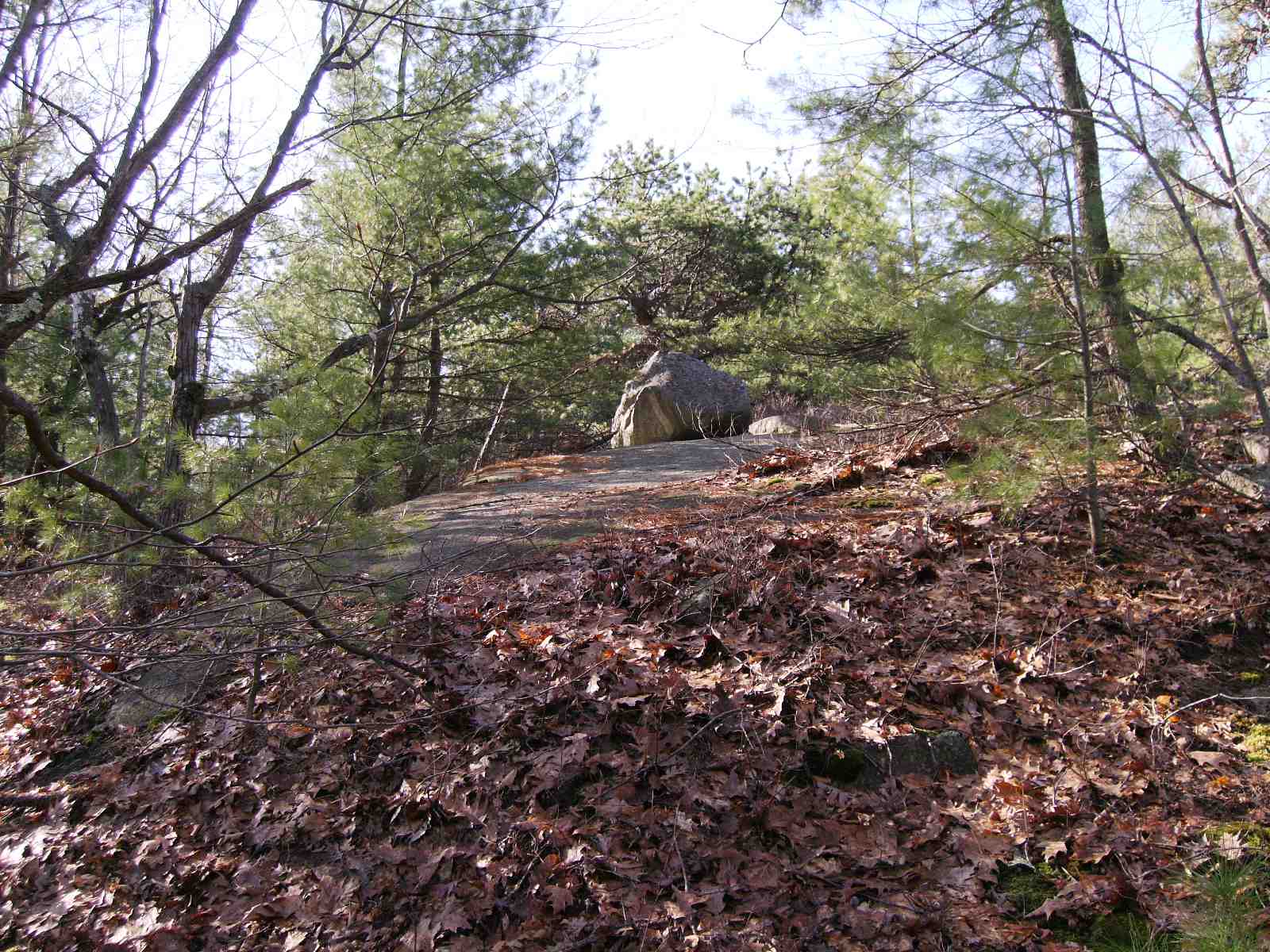
I decided to continue my journey north to Snake Meadow Brook. I looked for a pointer.
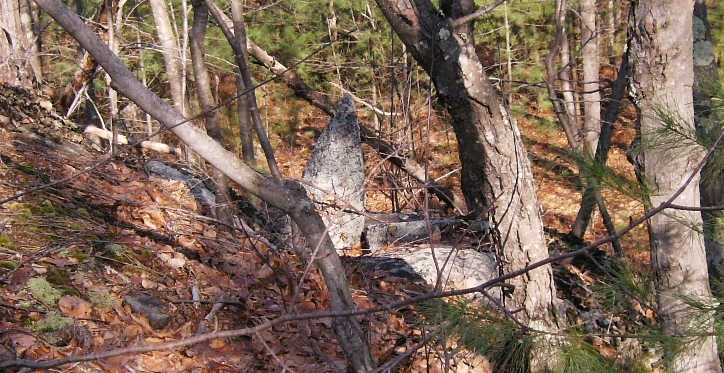
As I headed north, I looked back at this massive boulder that is the peak of the hill.
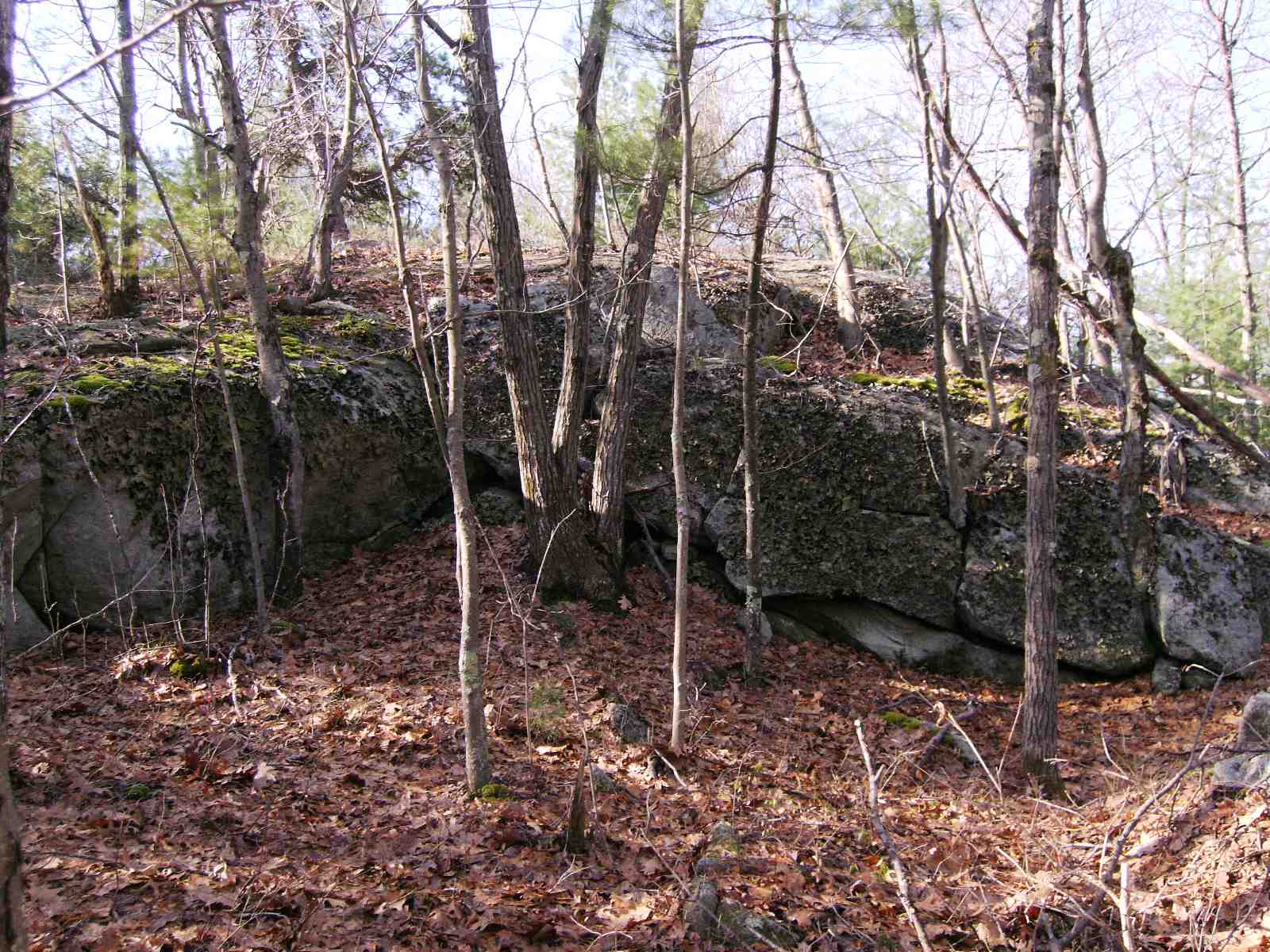
I found a few markers along the way, but considering that this area had been quarried, it is hard to determine distant past from more recent past. I did not find many markers and depended primarily upon my own sense of direction.
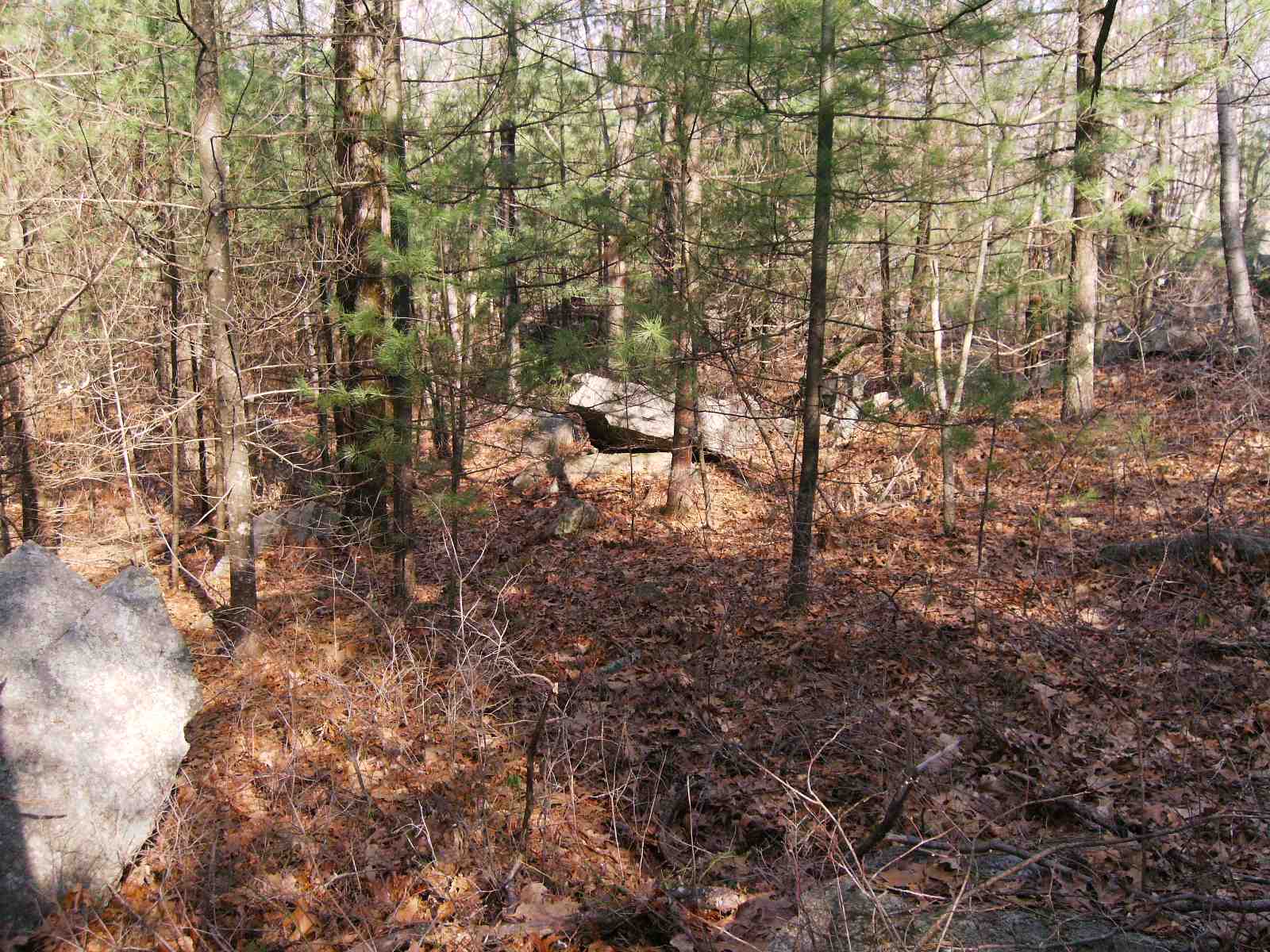
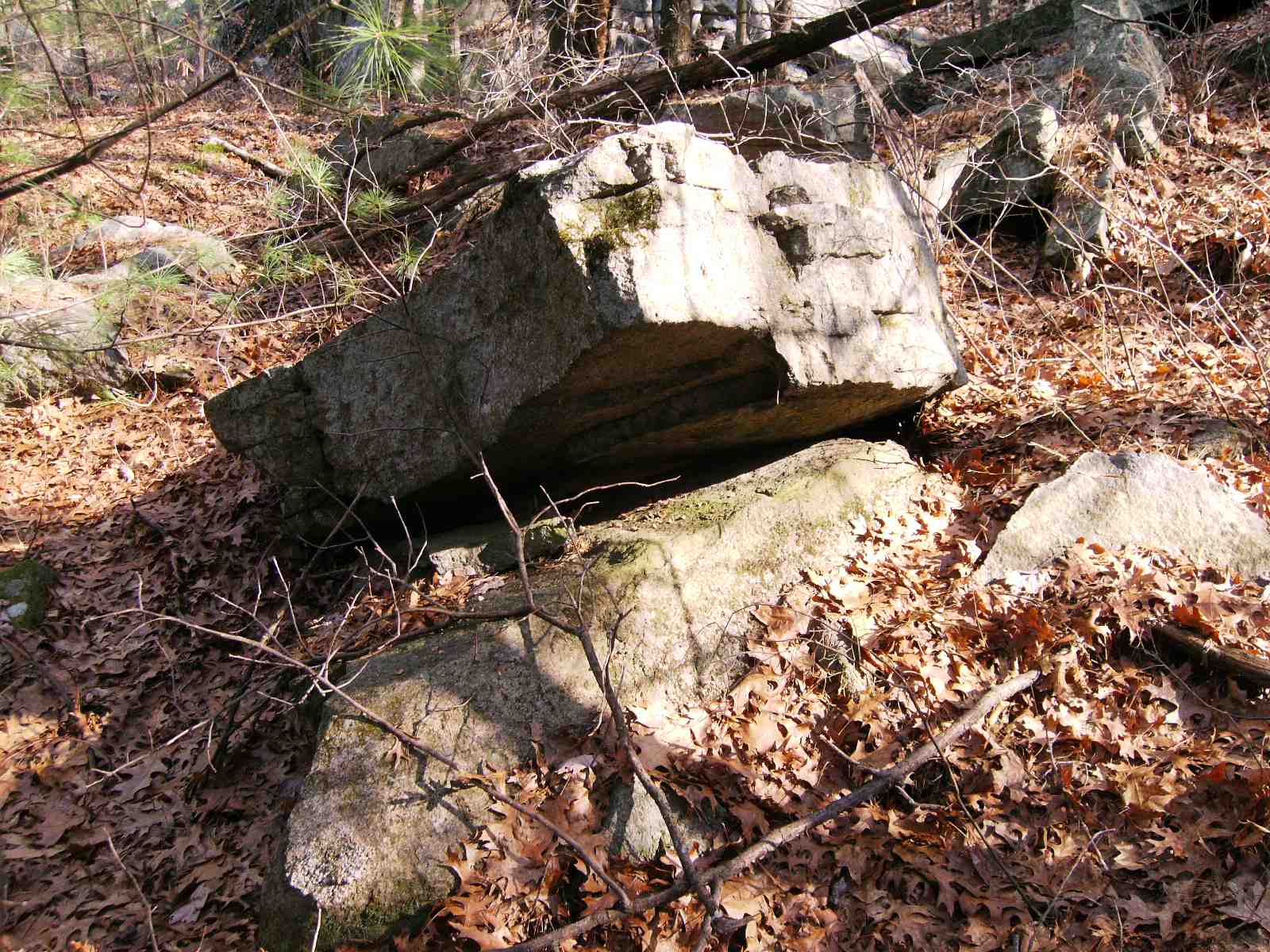
Finally, I reached some rock piles, but they took me in a different direction. I had gone a little too much toward the west and found the trail from the rock pile site on the western side of Cowdry Hill Road to Snake Meadow Brook.
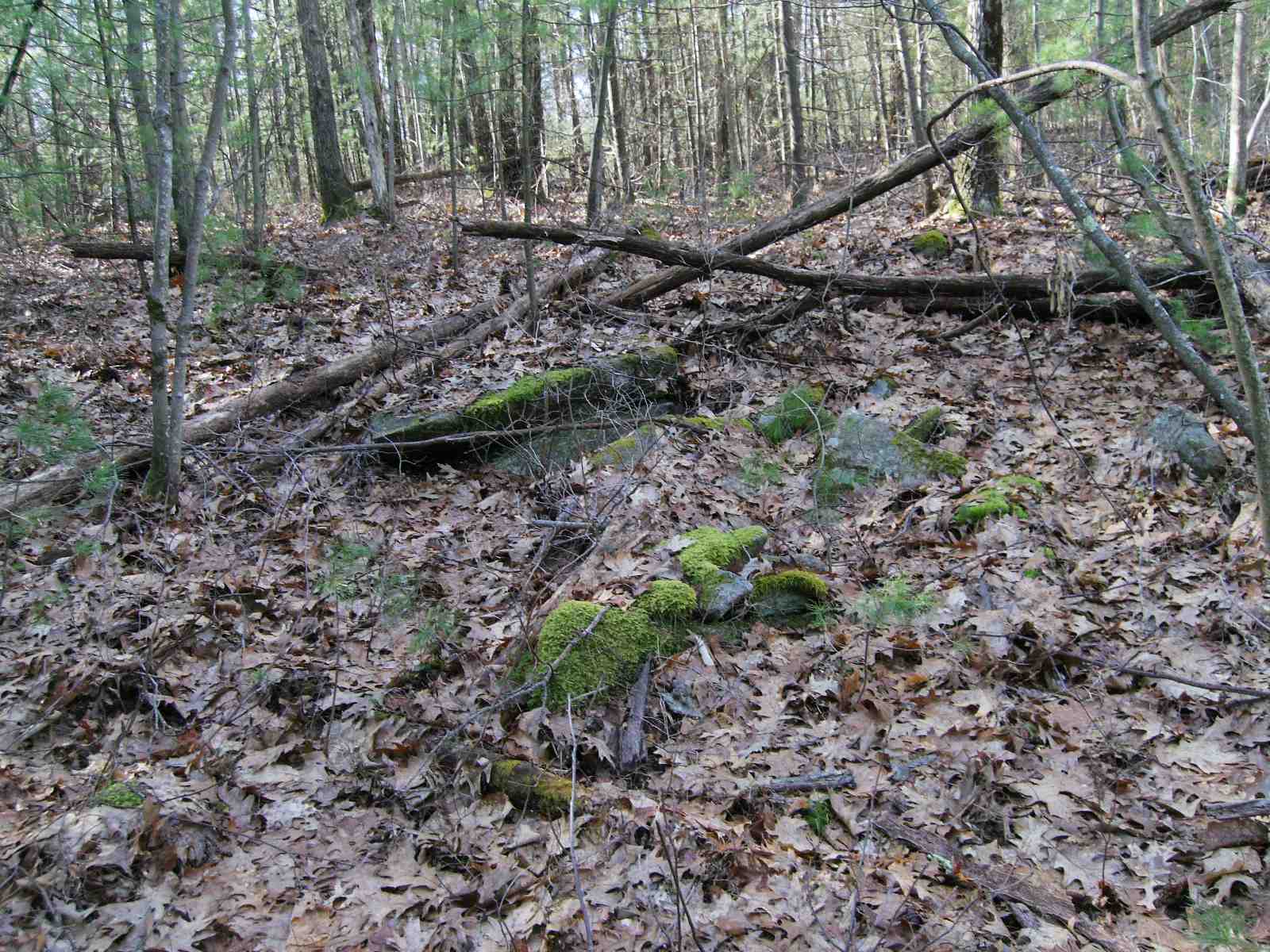
I followed rock piles and cairns until I reached a stone wall. This wall was thicker than most, consisting of several stone layers with small stones as fill. It is not the best stone wall in the area, but certainly better than most. (The best stone walls were on Millstone Hill, to be shown later.
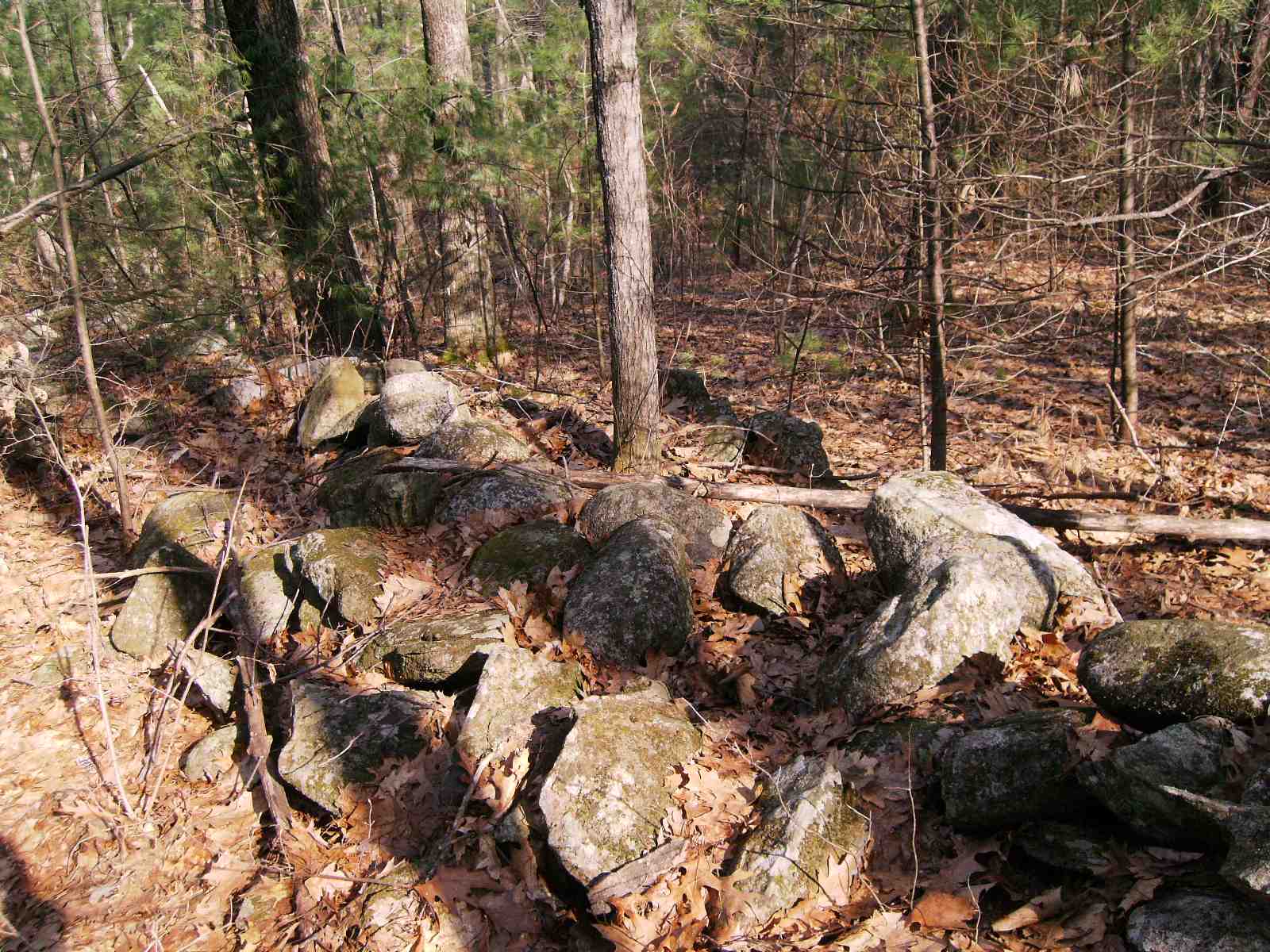
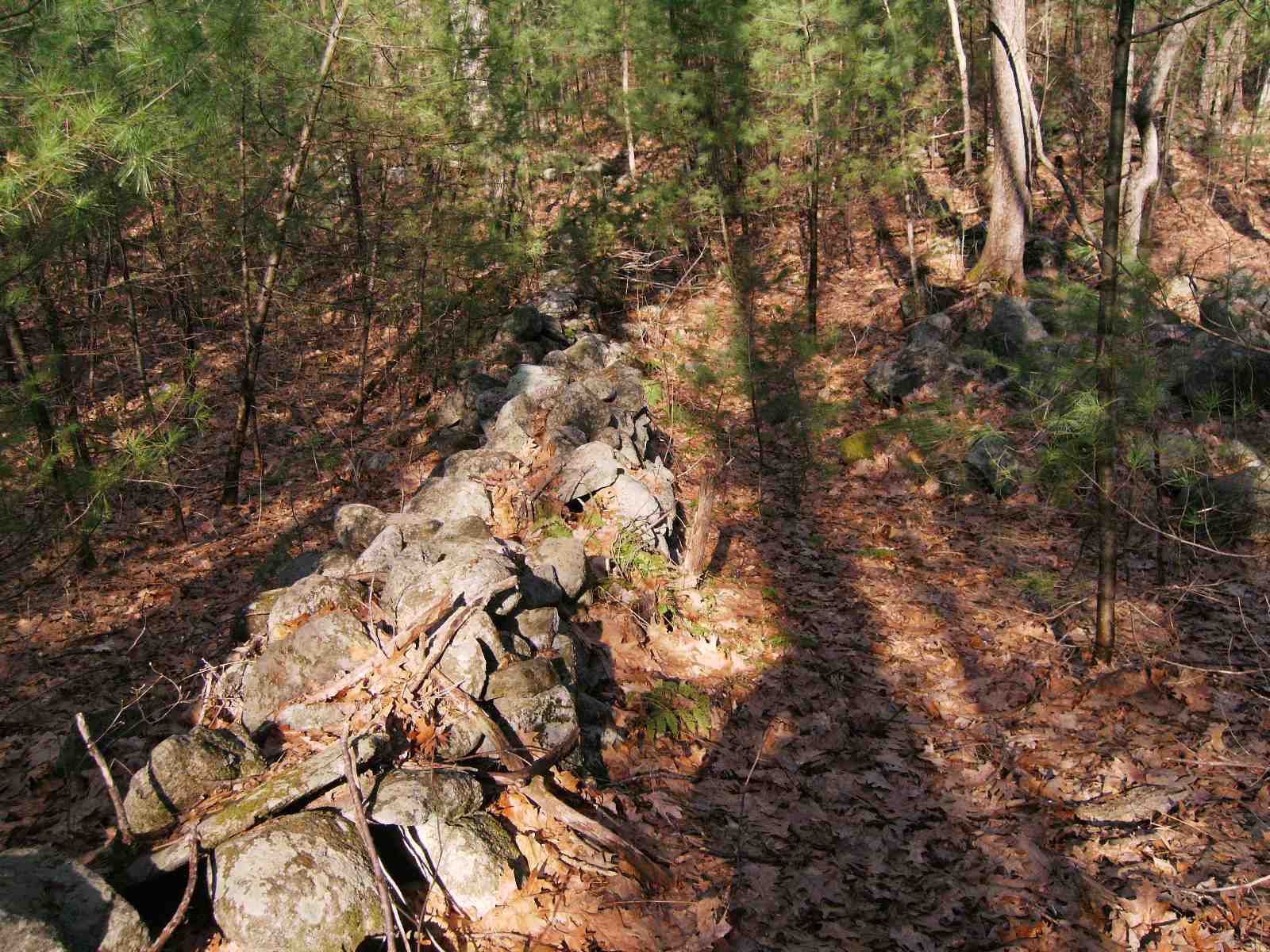
After following the stone wall for about a hundred feet, I saw a massive area, probably a acre, of stone piles. I saw two large stone piles about thirty or so feet long in a row. They were the hypotenuse of a right triangle formed by two stone walls. The area inside the triangle had only a few small stones. The area was so large that I could not find a way to photograph it.
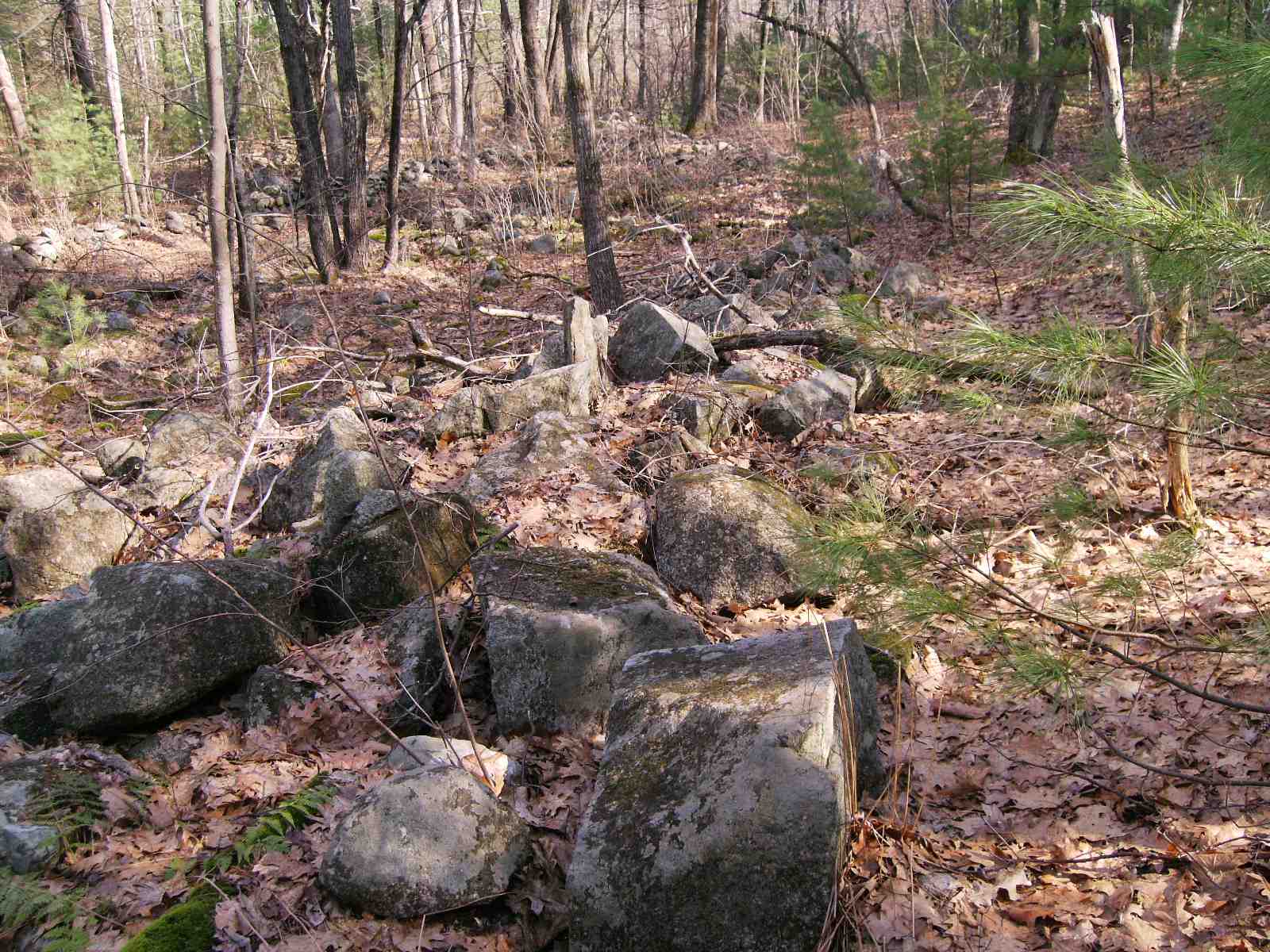
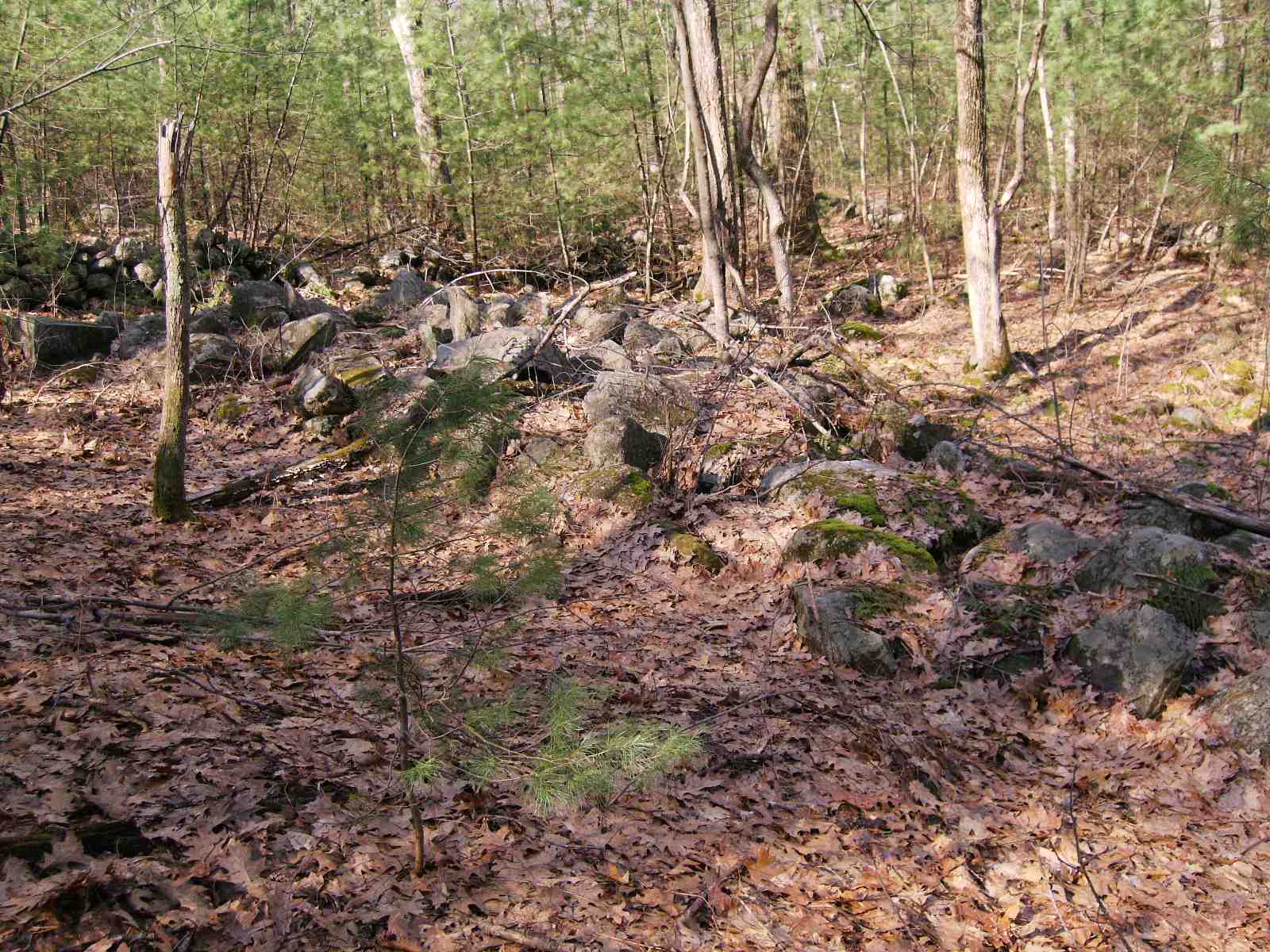
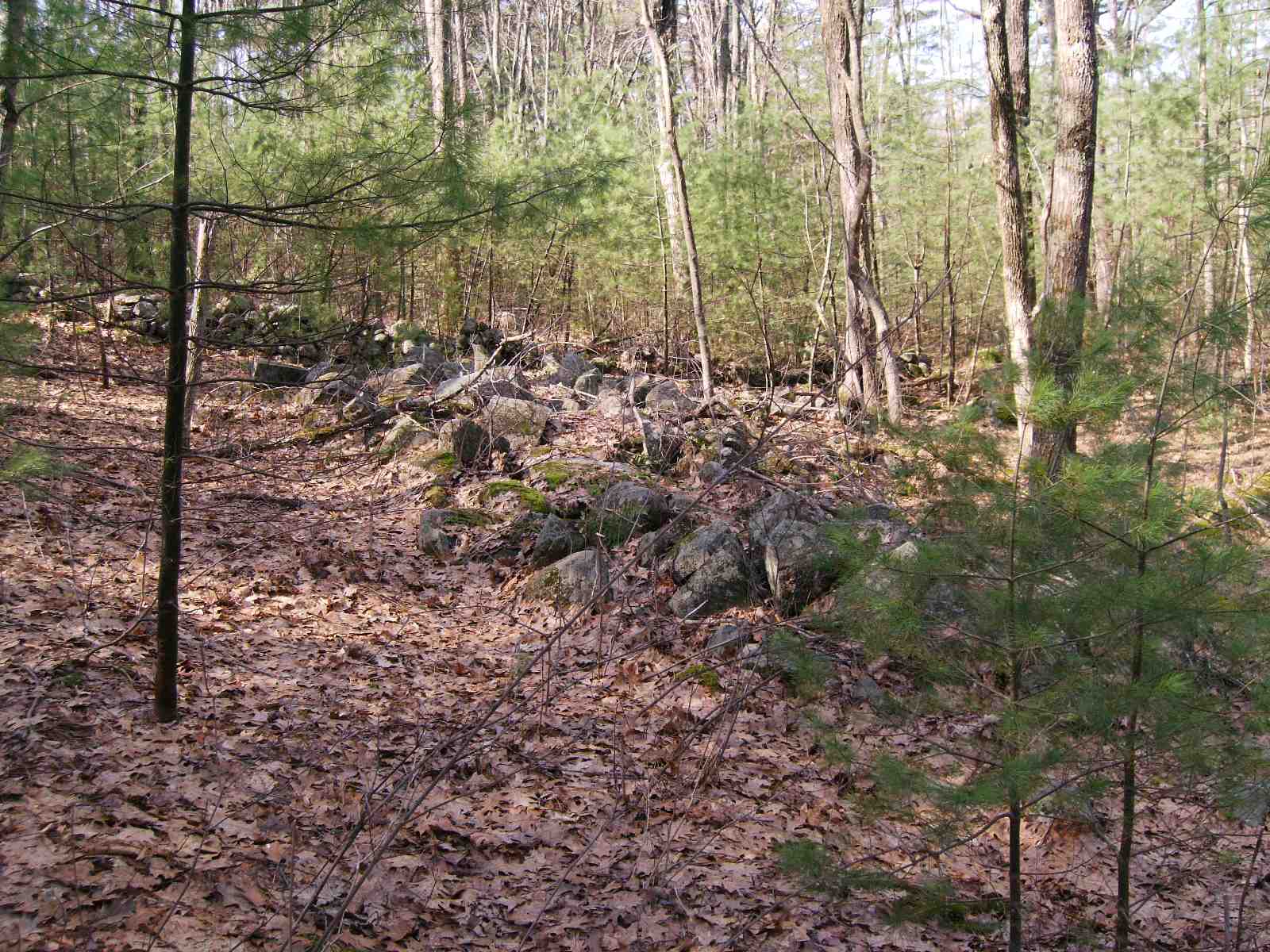
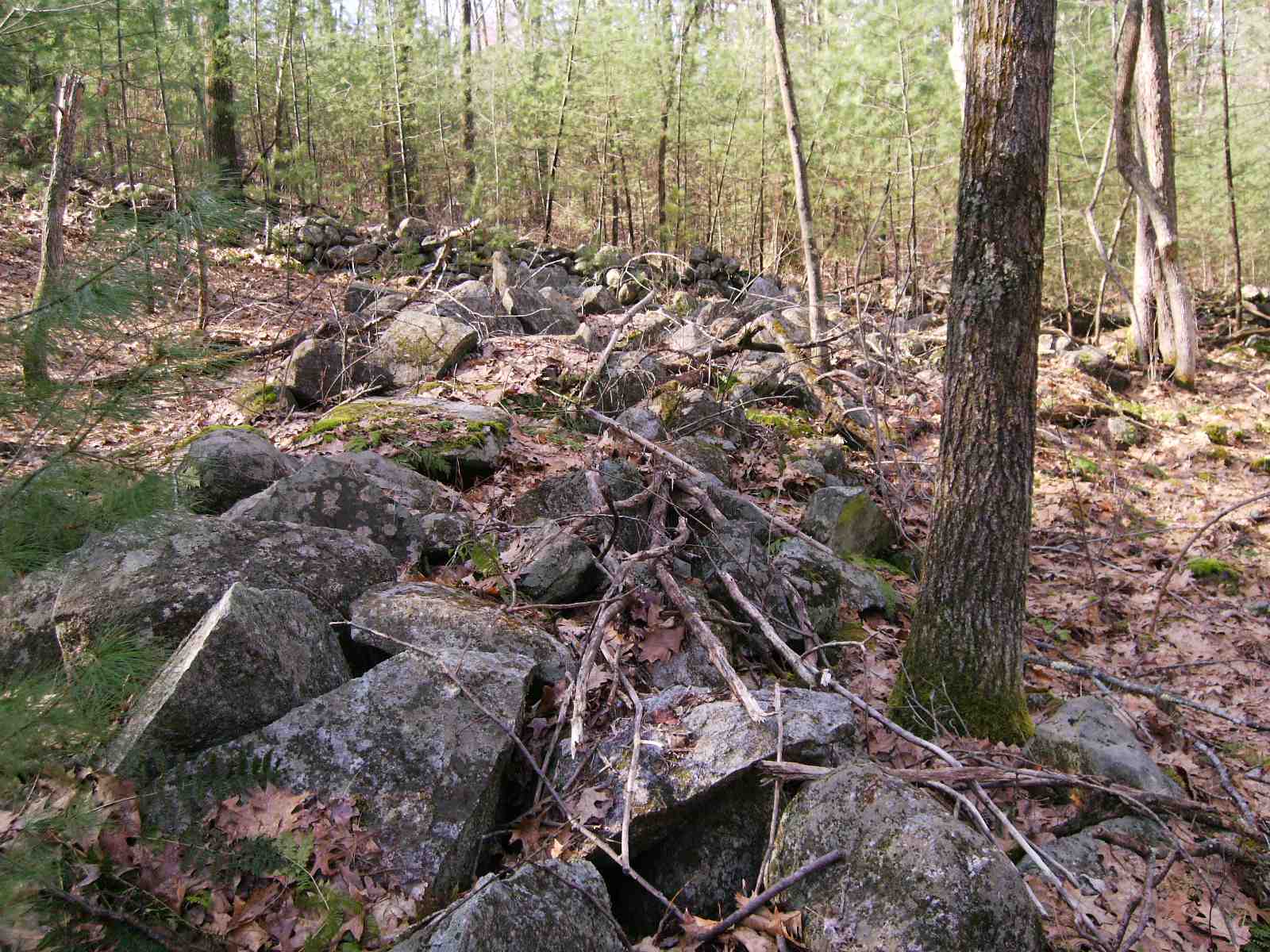
This is part of the inside of the triange.
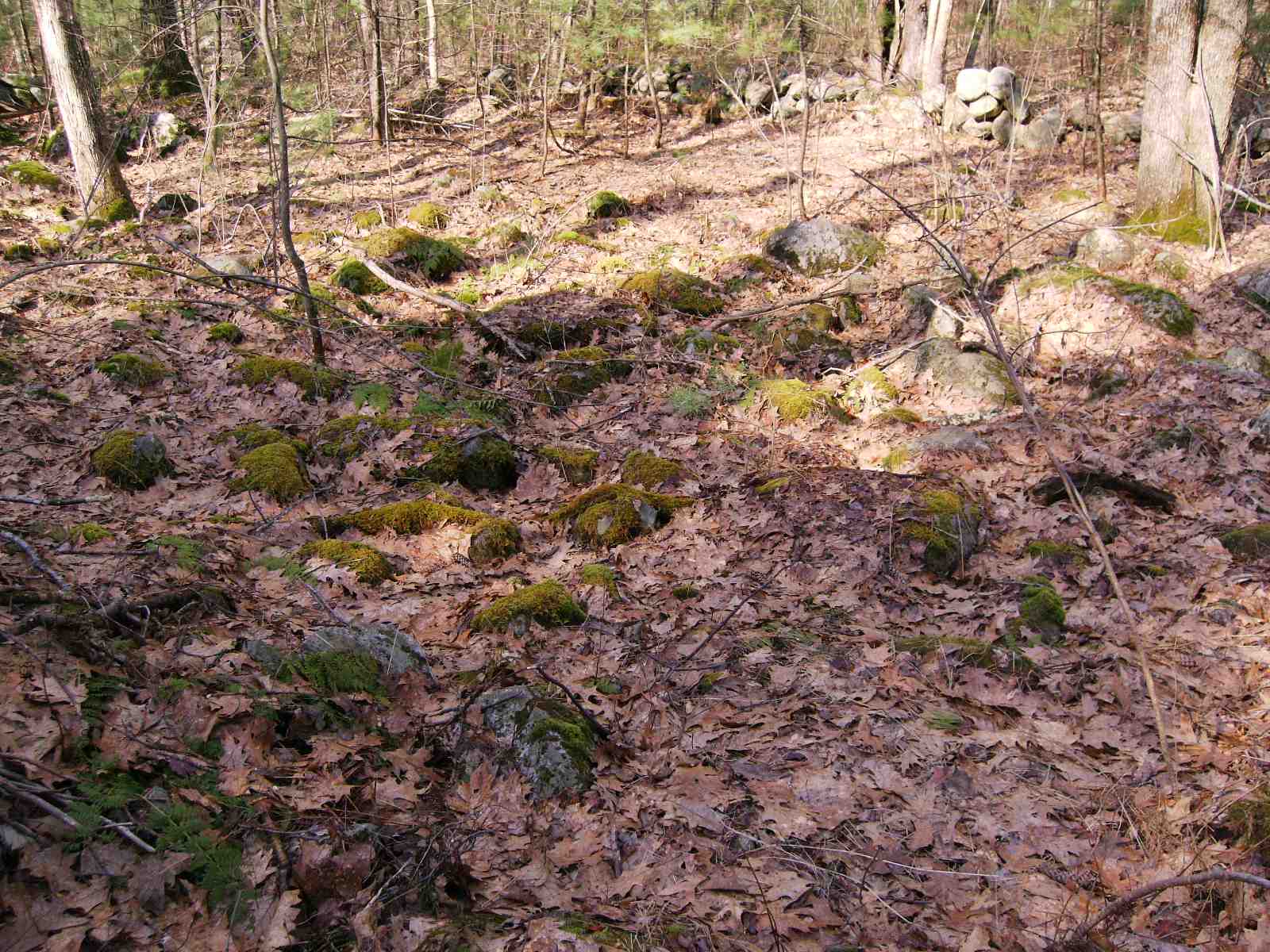
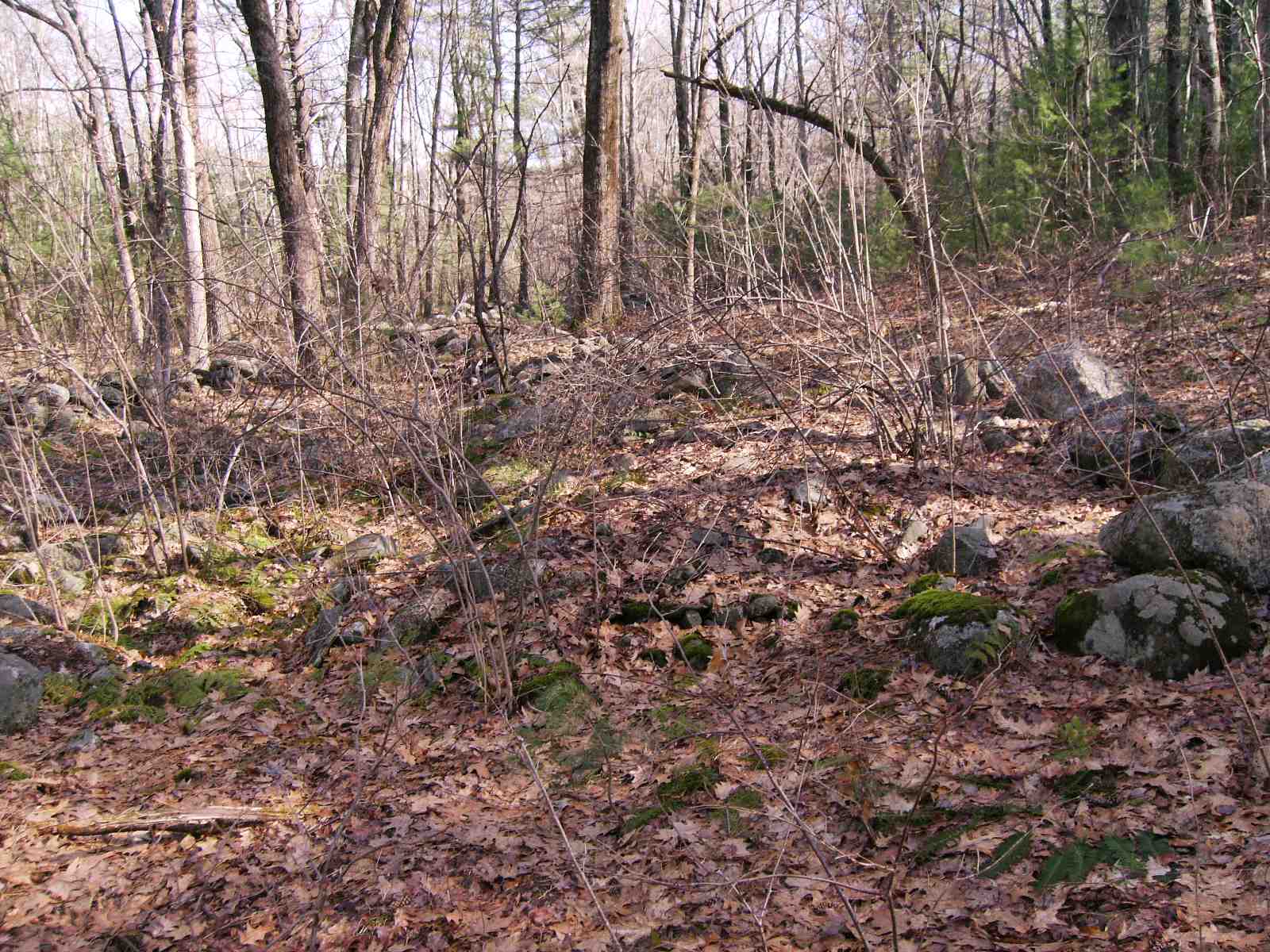
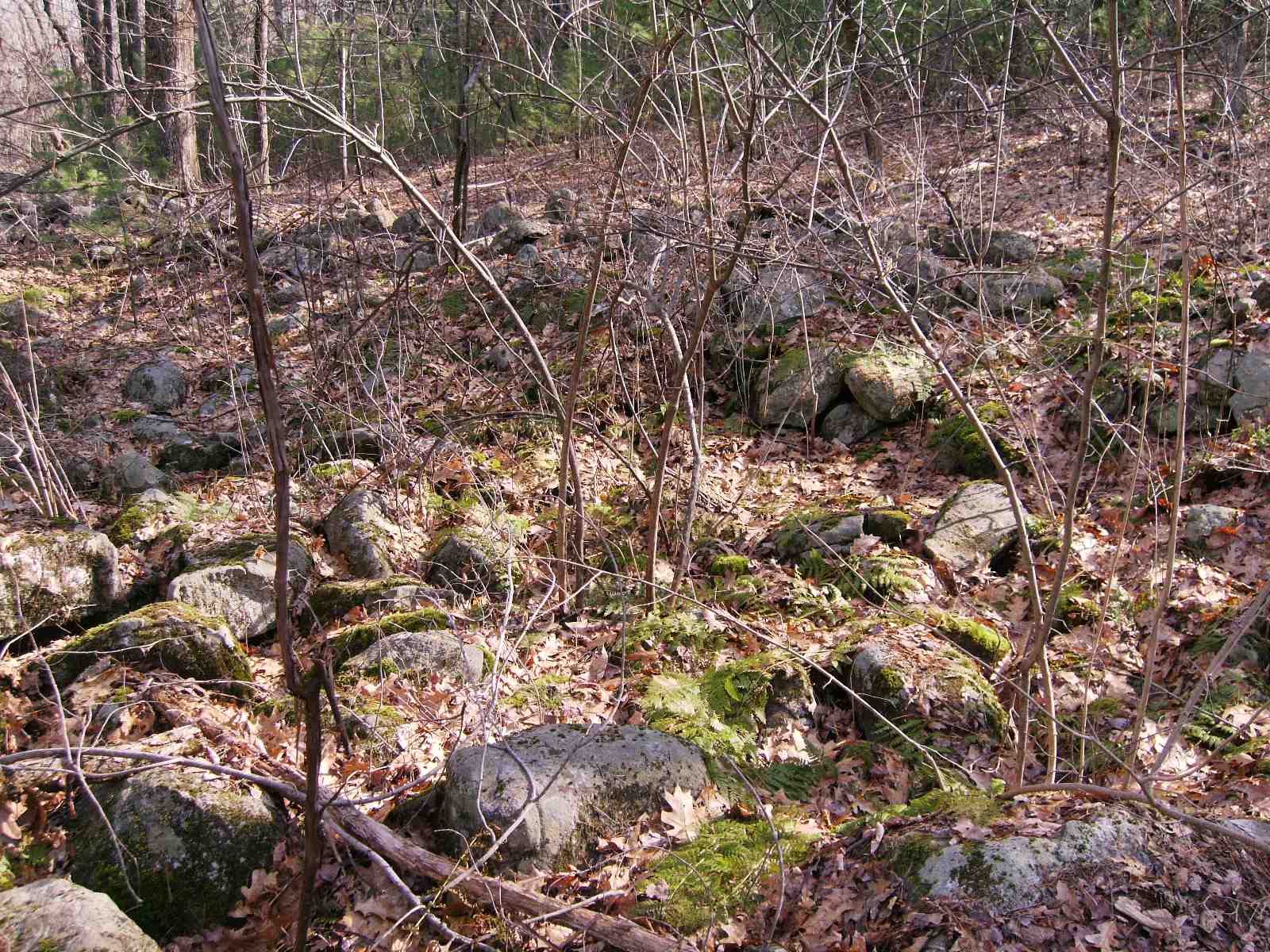
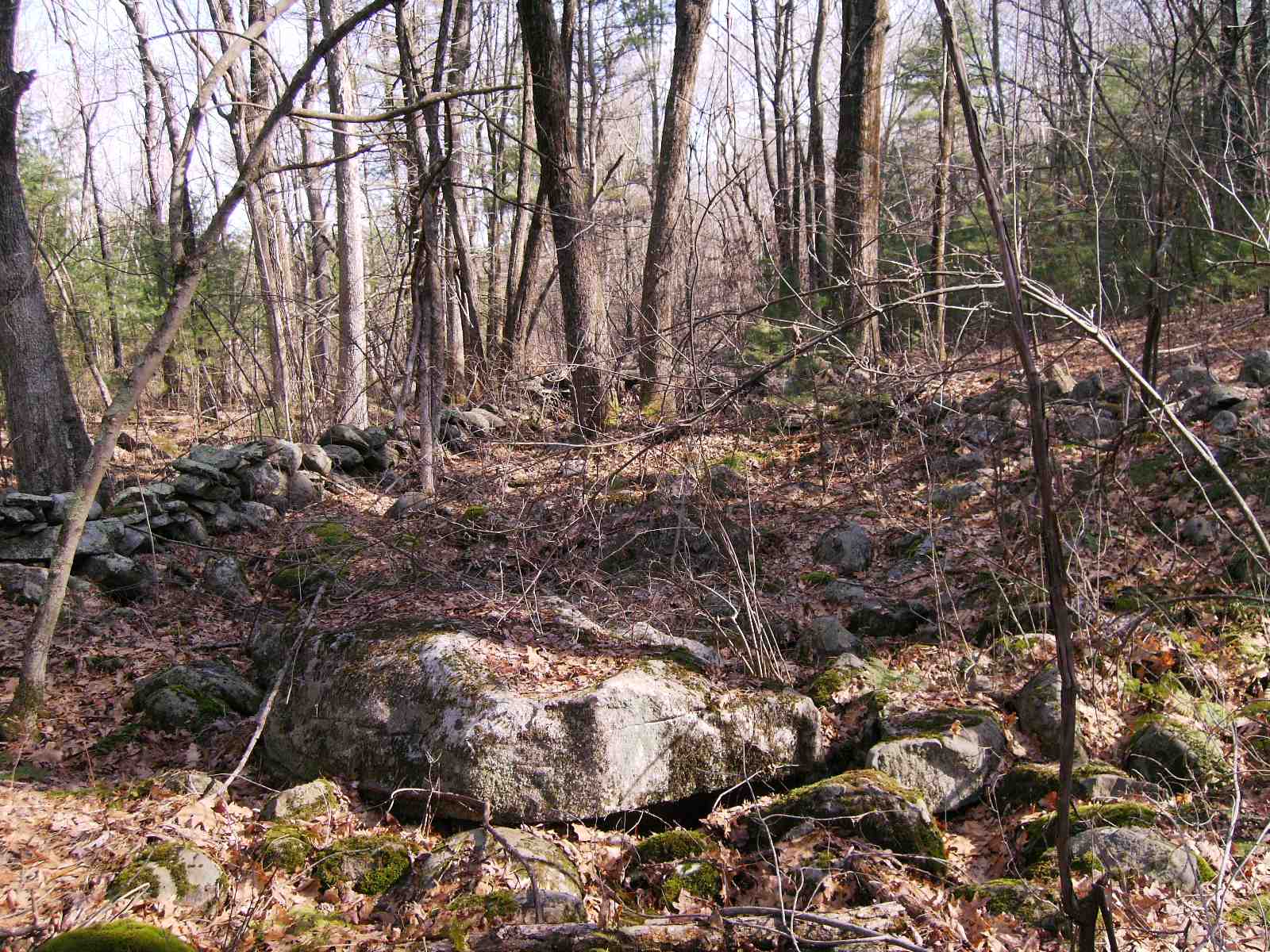
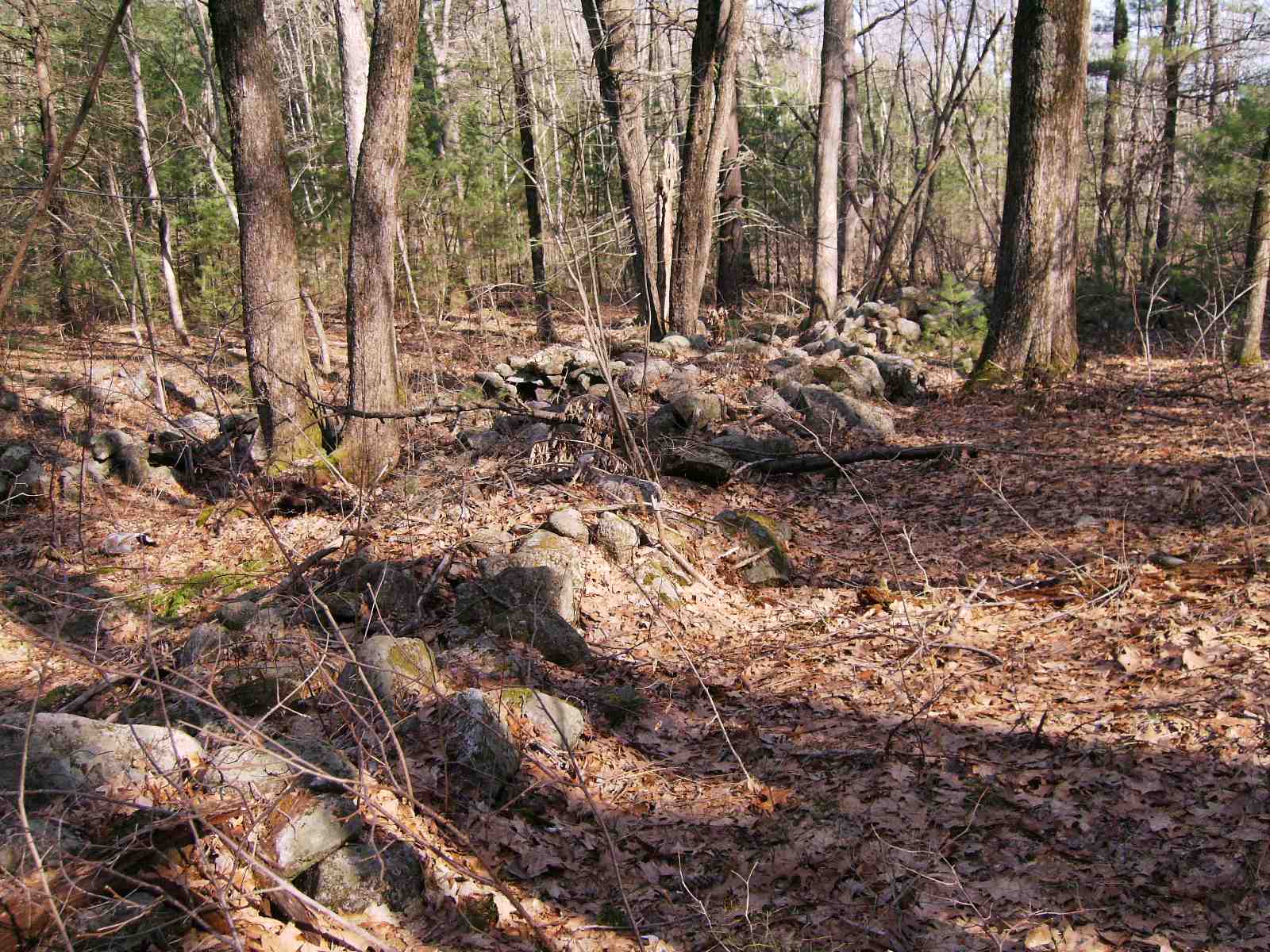
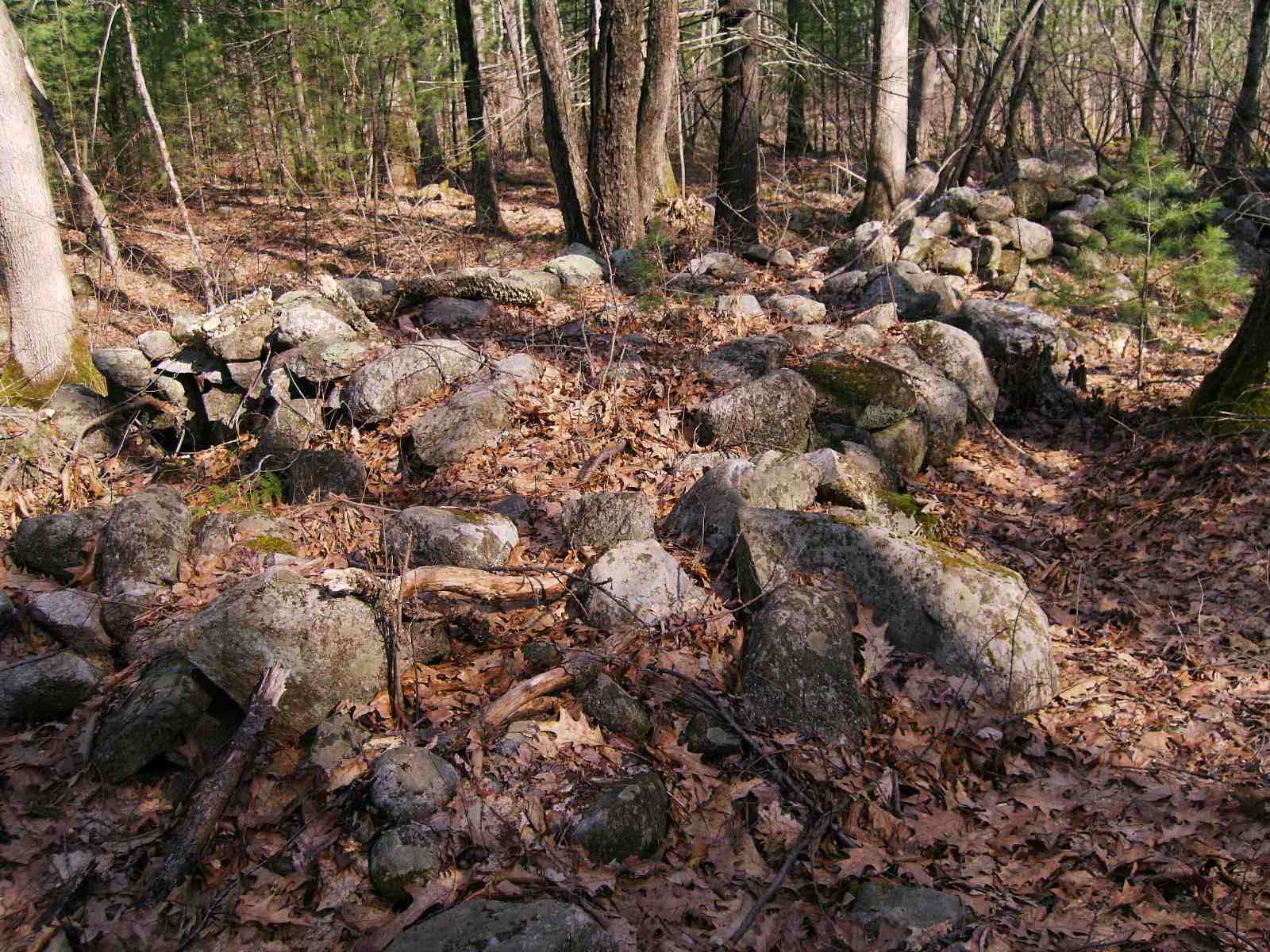
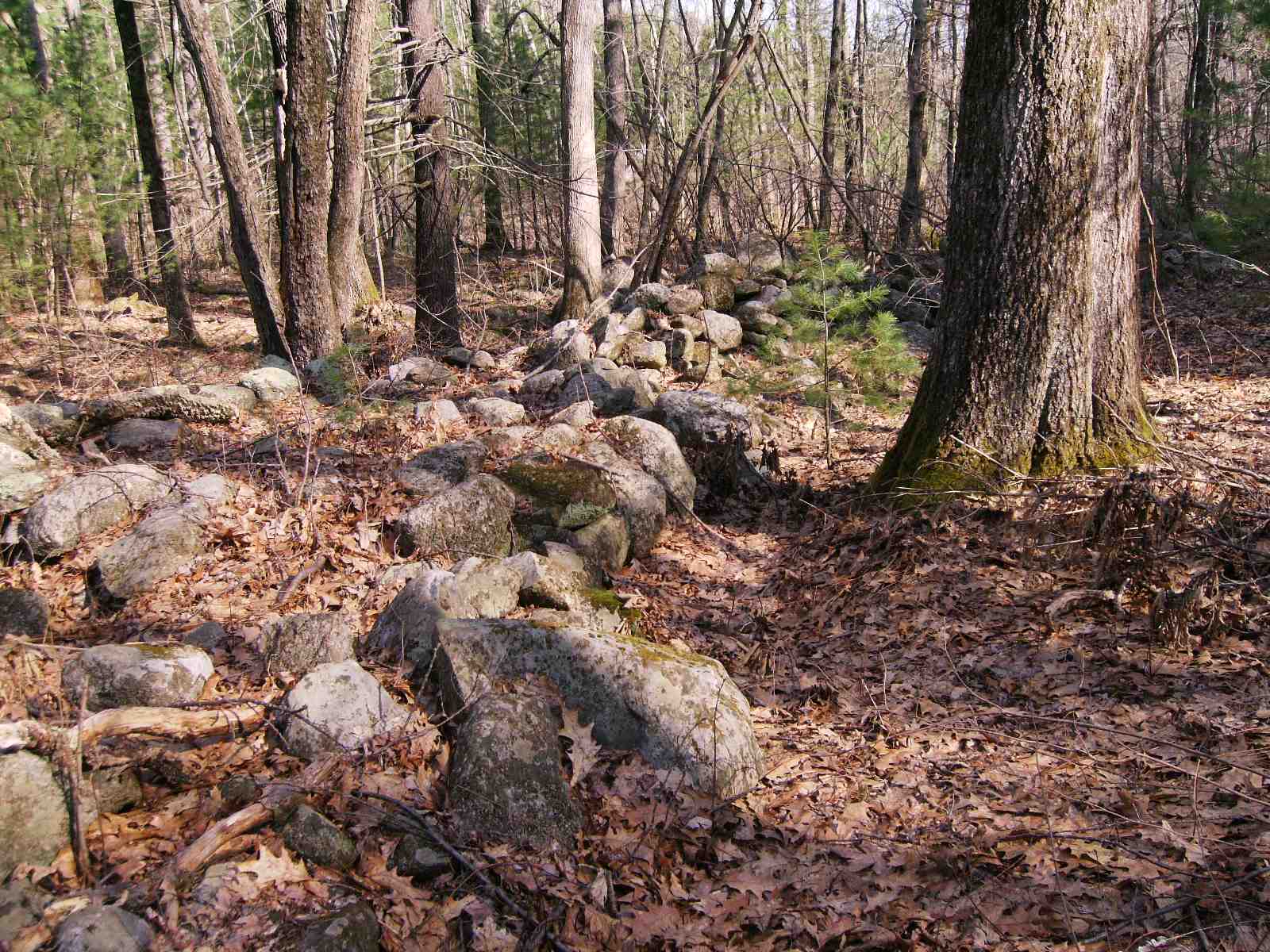
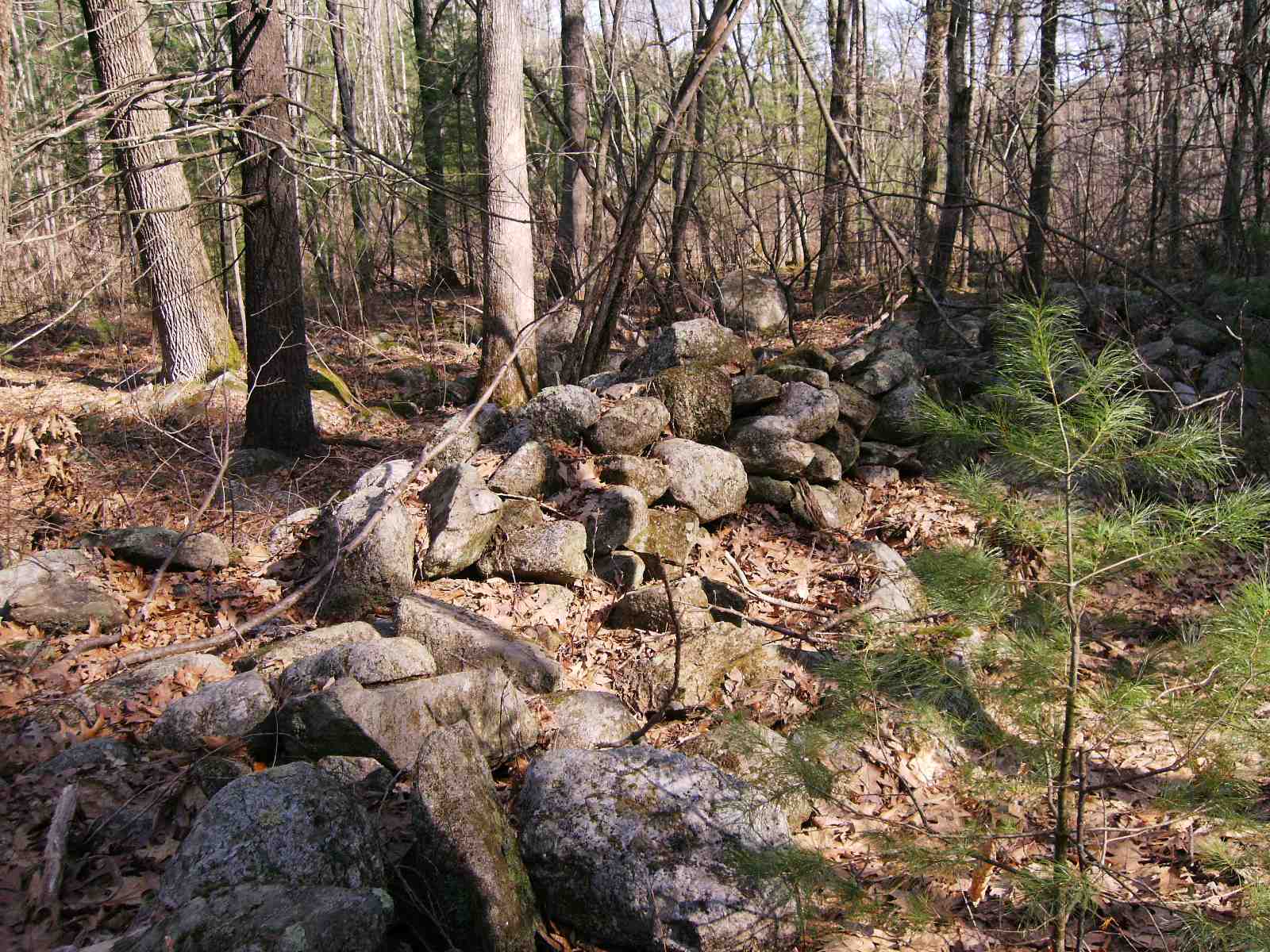
I crossed another massive stone wall. I was now on the property where I grew up. I know this property better than anybody else. I know the locations of buried history.
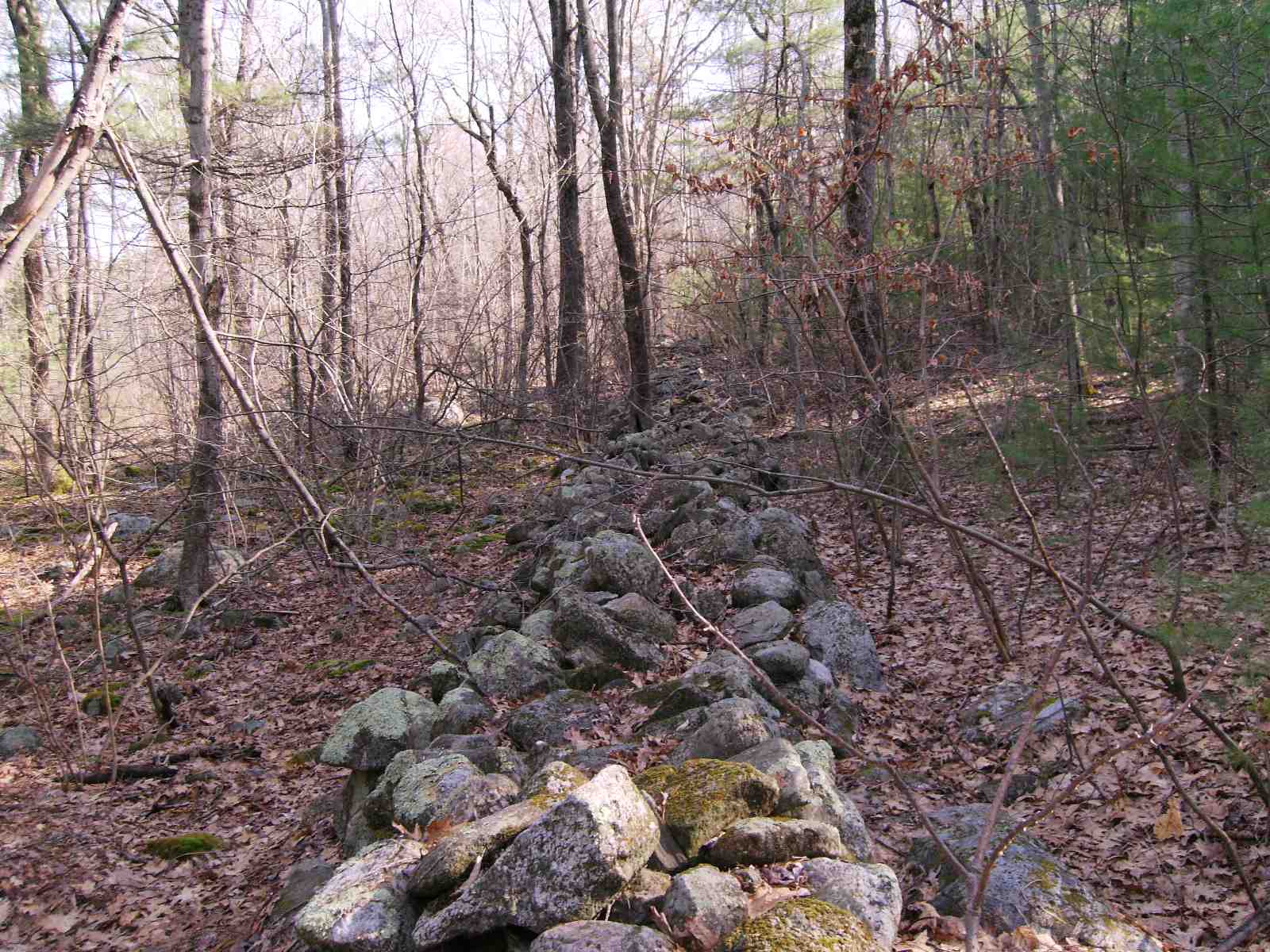
The next two pictures are the top of a small mound between the base of Snake Meadow Hill and Snake Meadow Brook. In the background of these two pictures, and slightly blurred, is Snake Meadow Brook, which is more like a pond. As I looked at these stones, I felt that I was looking at an alter on the top of this beautiful mound.
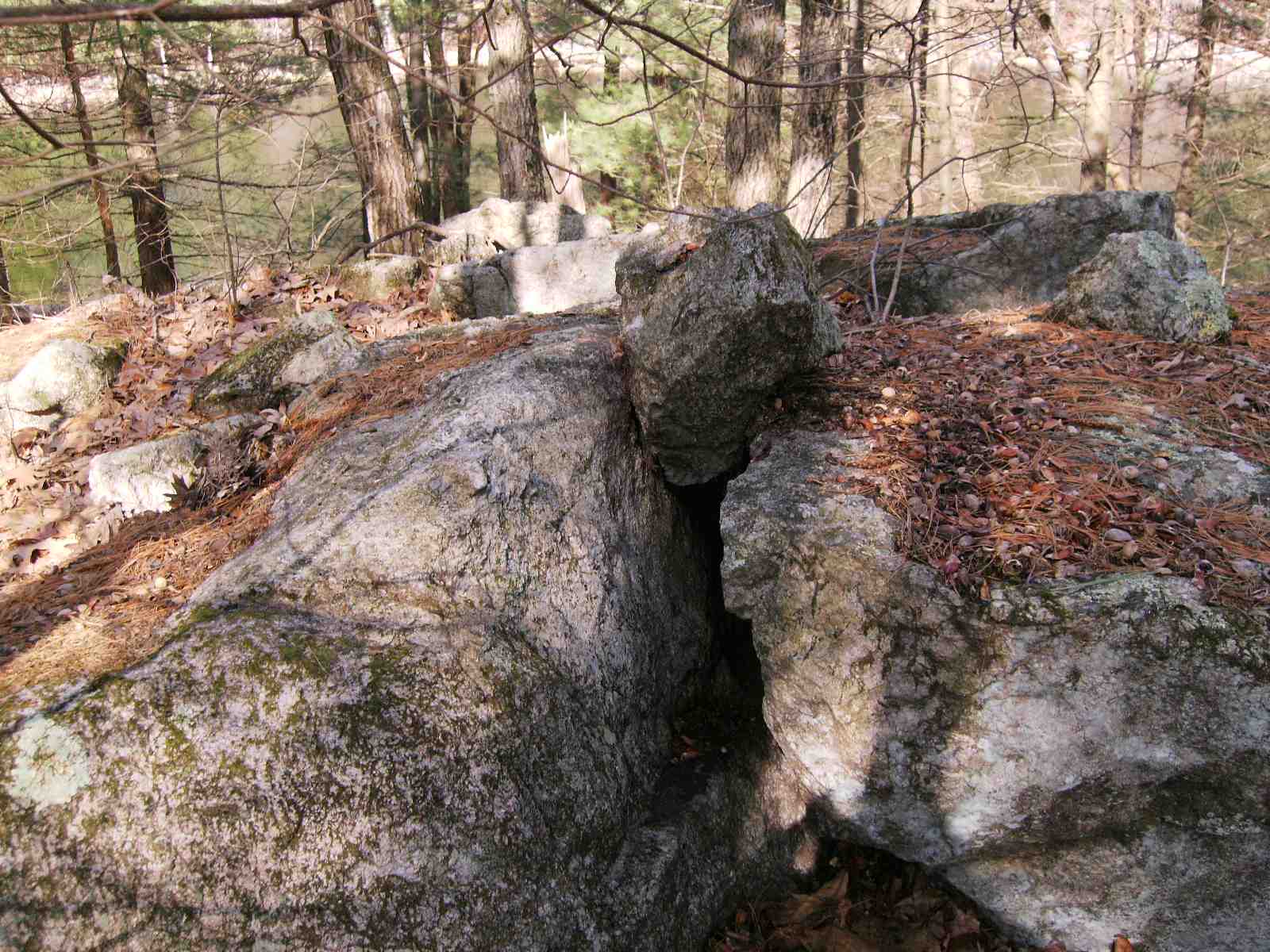
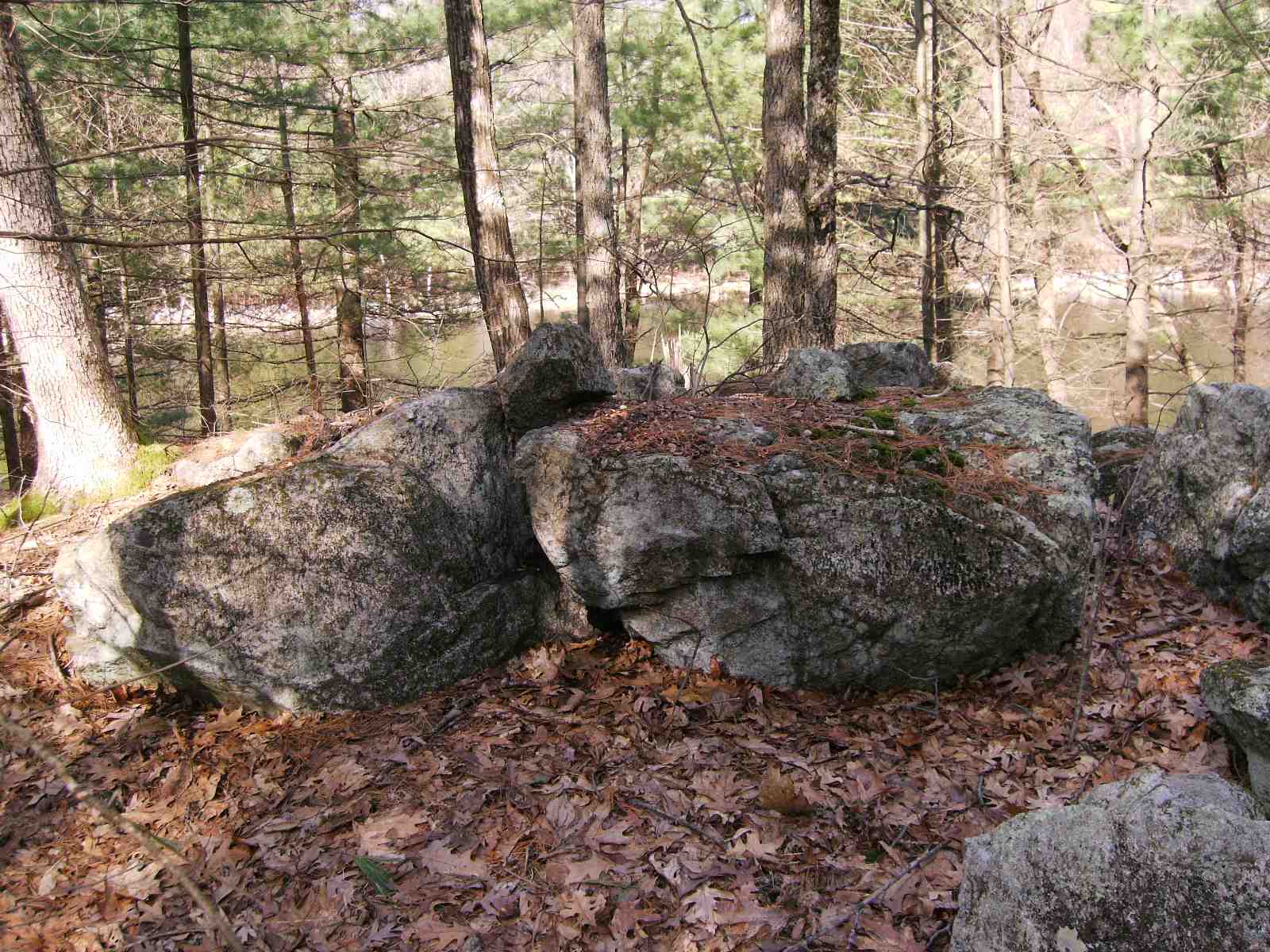
On the other side of the mound is Snake Meadow Brook. During the spring, the brook is fairly turbulent and difficult to cross. A bridge was built across the brook. The bridge is about thirty feet long. Most of the bridge consists of stones planted in the mud until a hard surface was formed. At the middle of the bridge stones were placed to form a base and a four foot square field stone was placed. None of these stones have quarry marks. Over the last thirty years, beavers built a dam upon this bridge. I have tried to photograph some of the stone base that is visible behind the dam.
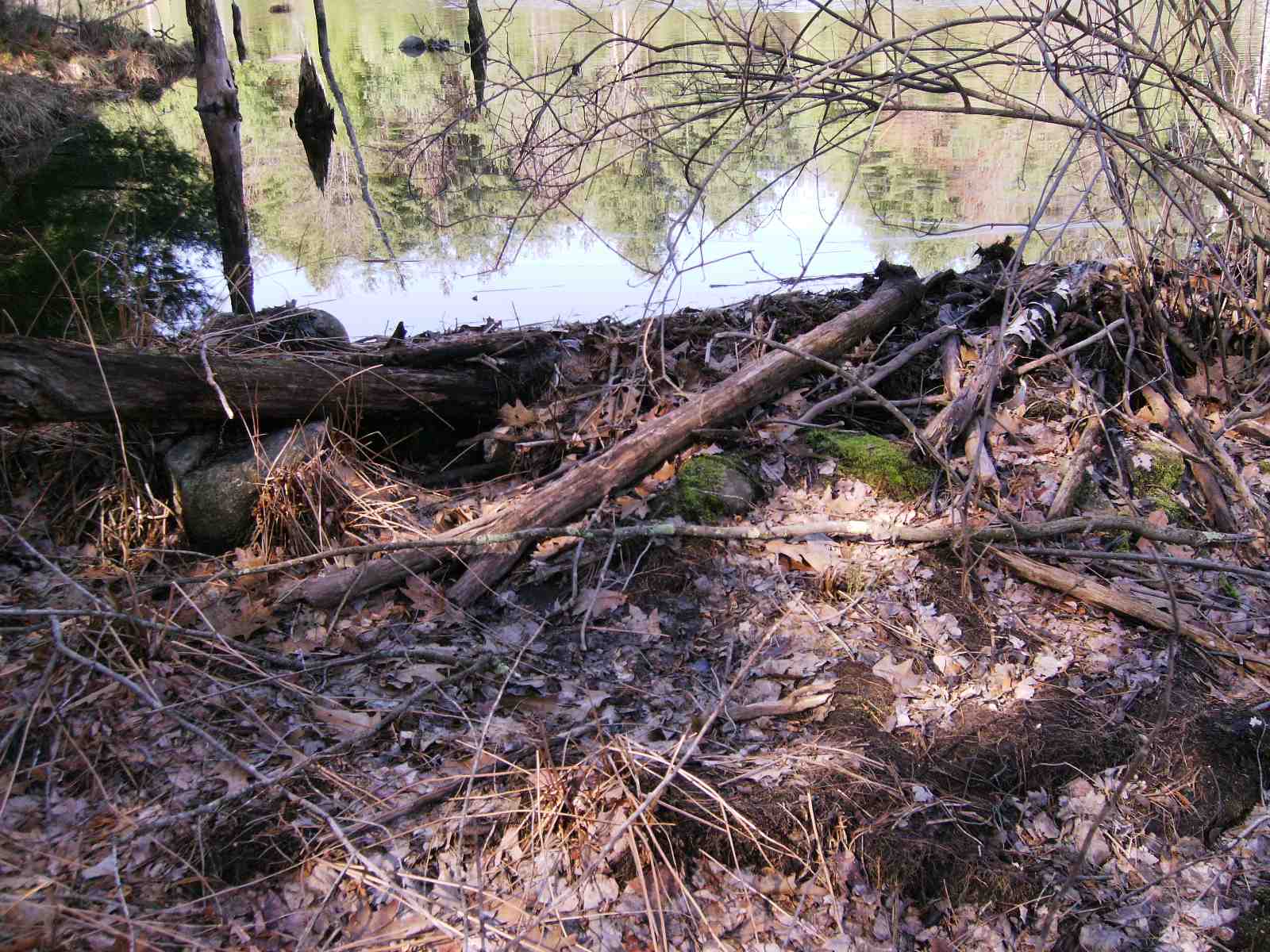
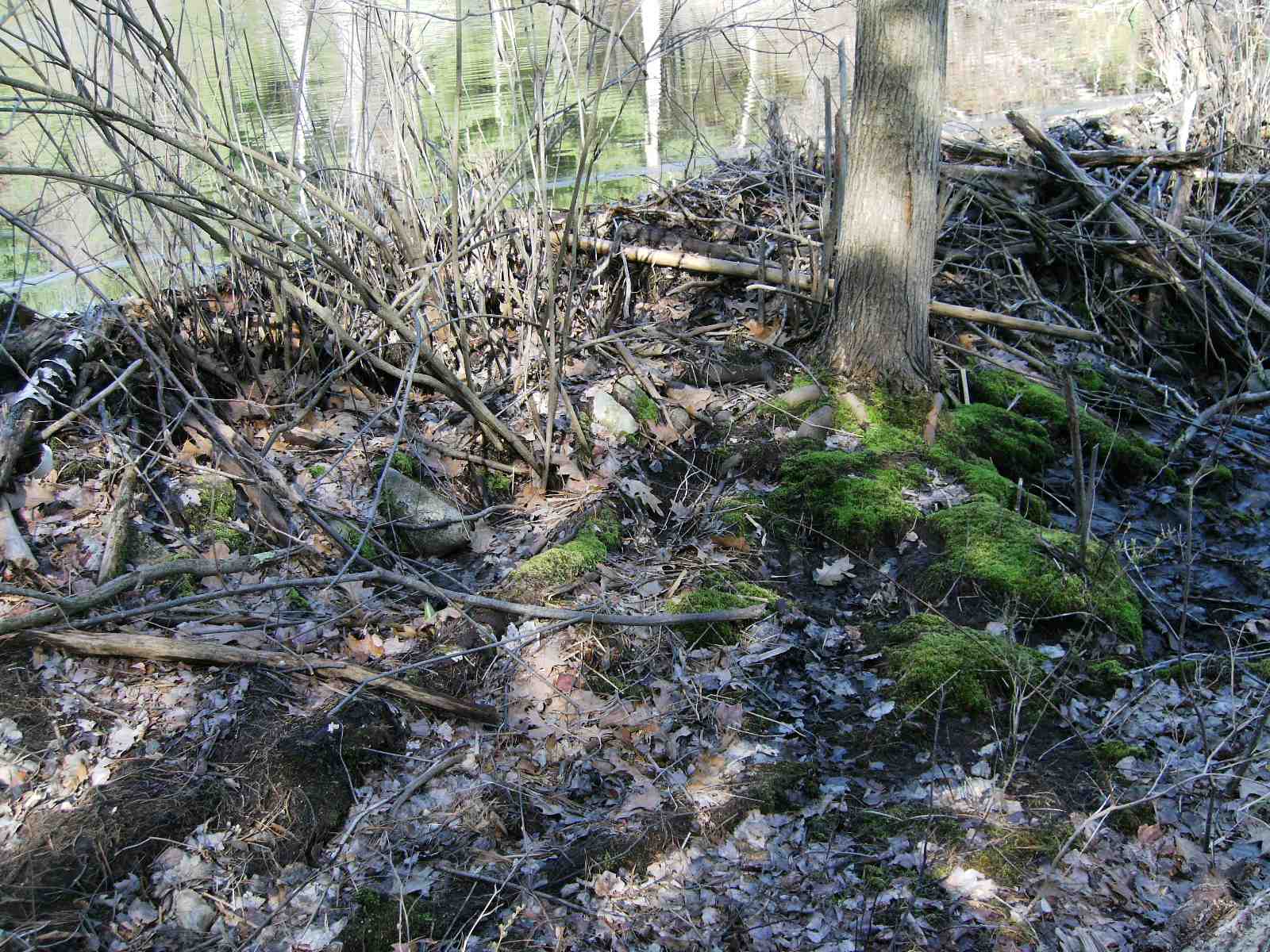
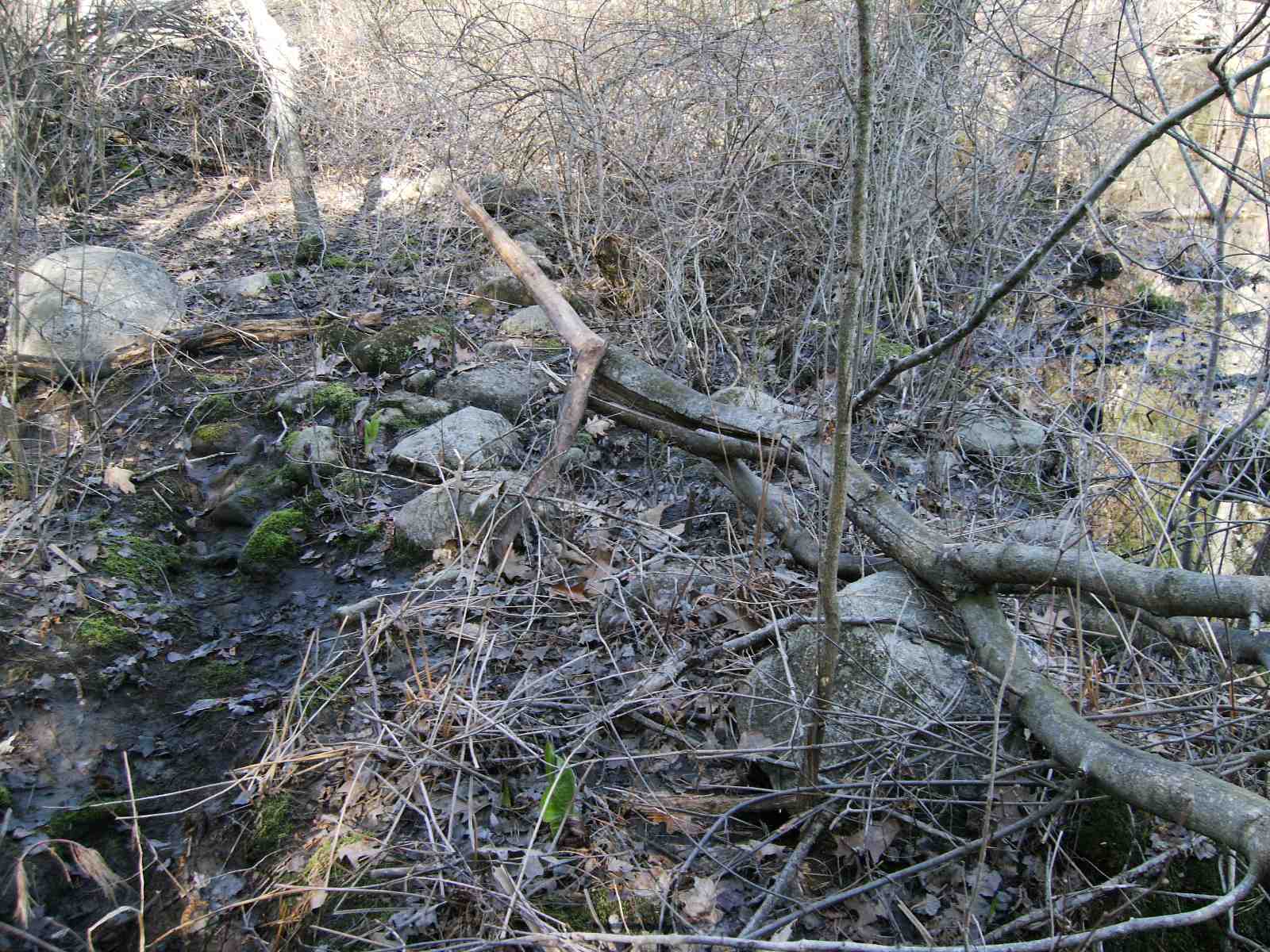
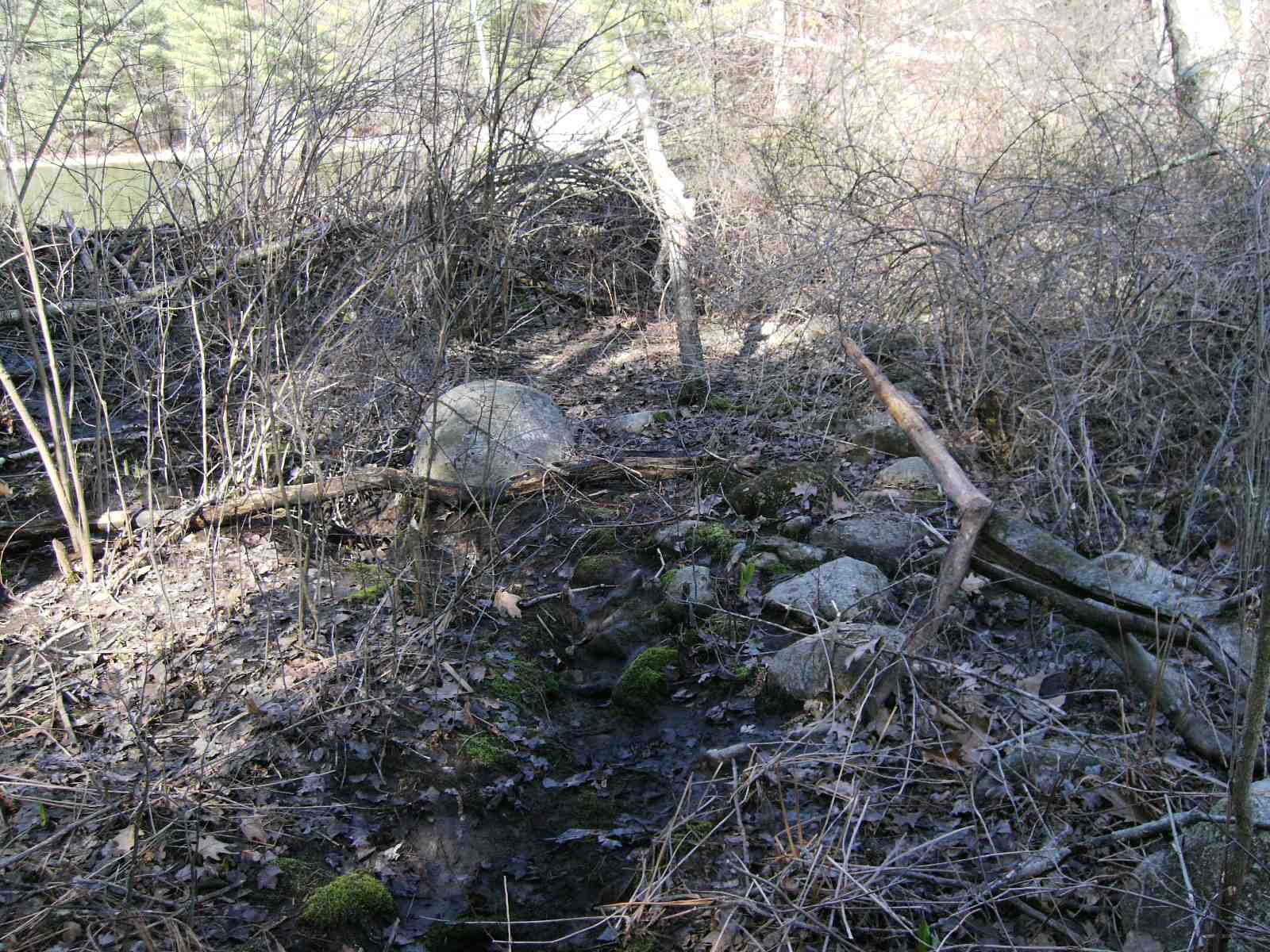
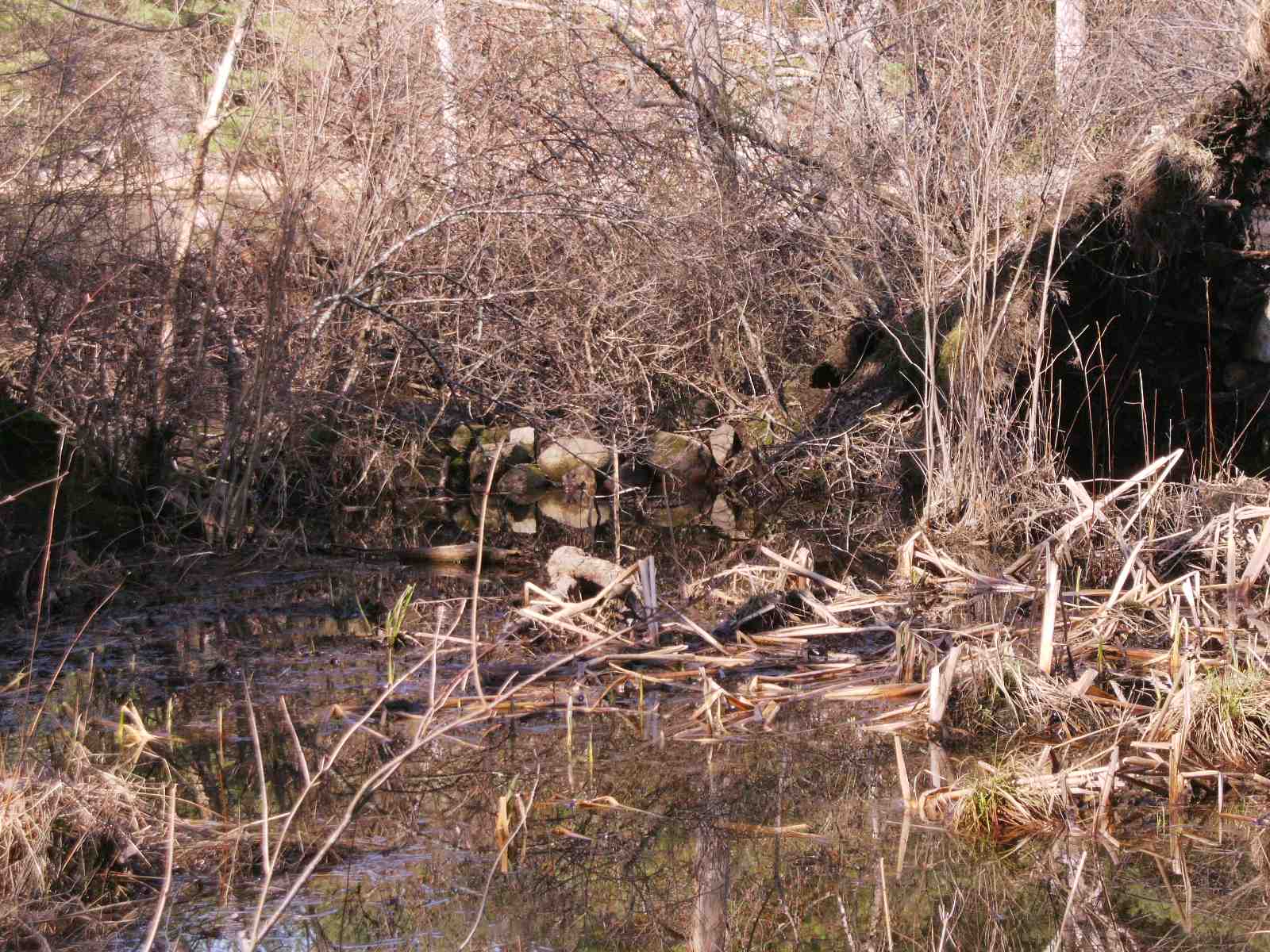
After leaving the mound, I headed west and found another rock pile.
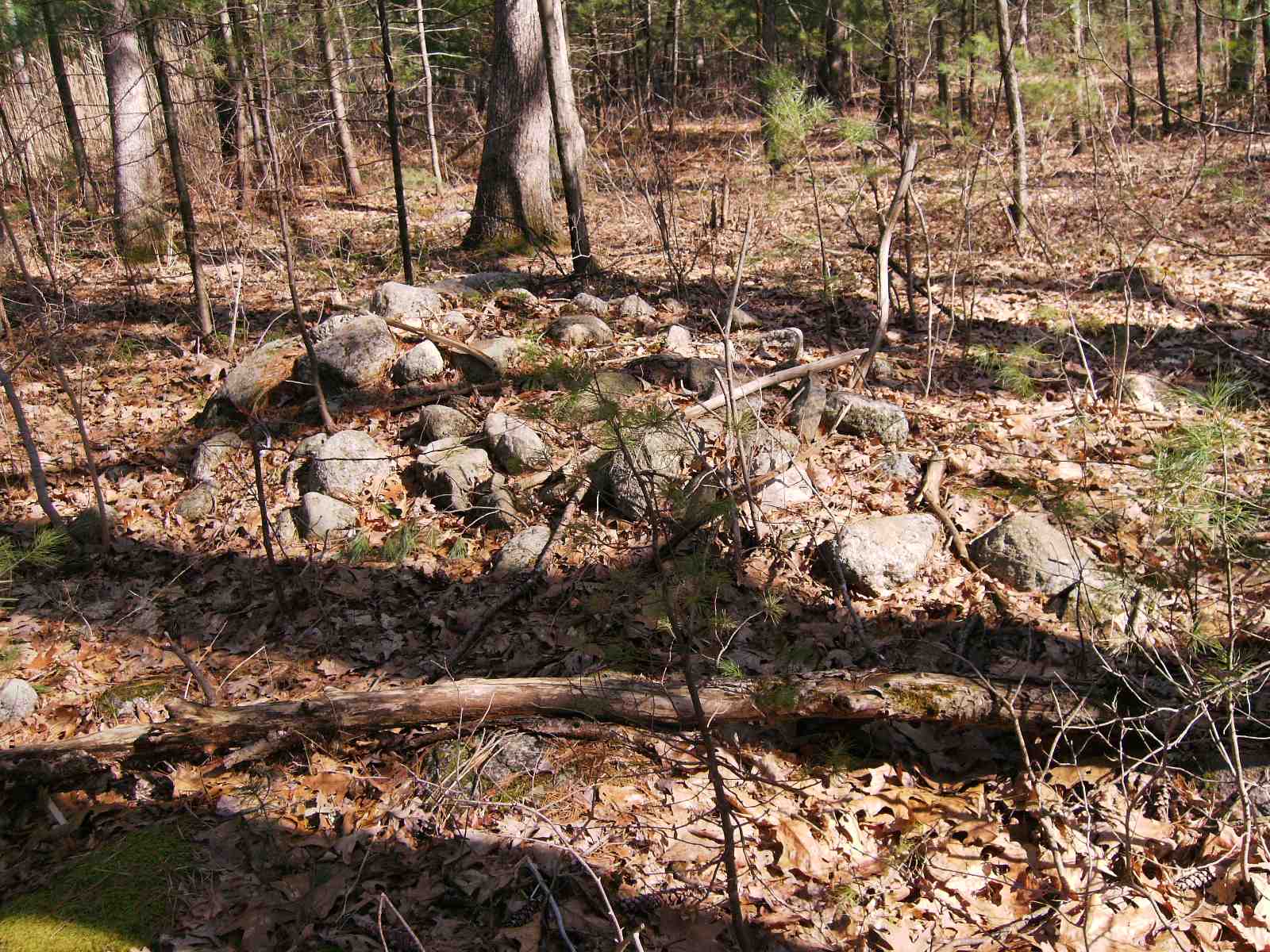
As I proceeded, I found a number of small springs that emptied into Snake Meadow Brook.
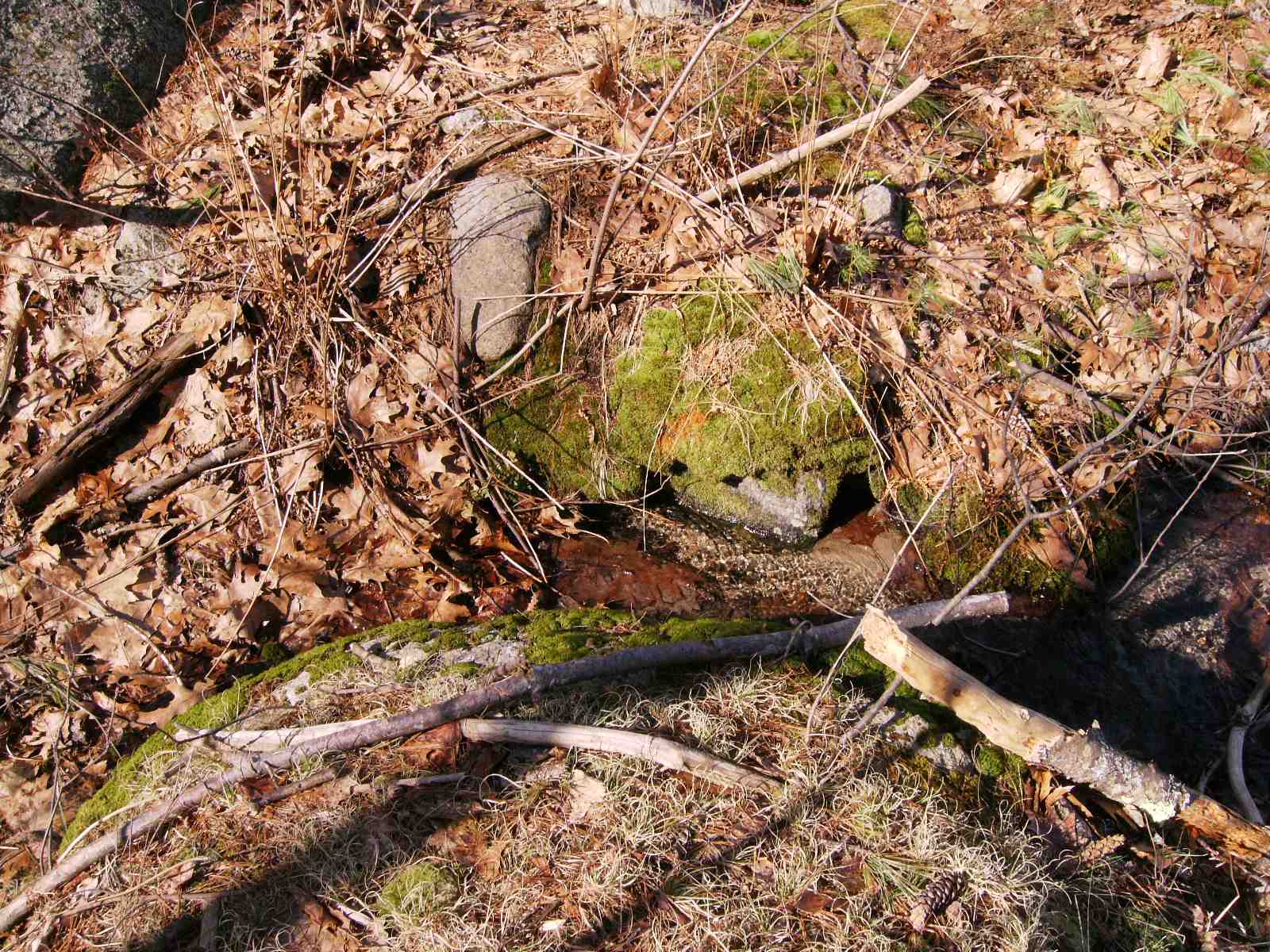
In the next section, I will pick up on the north side of the brook.
